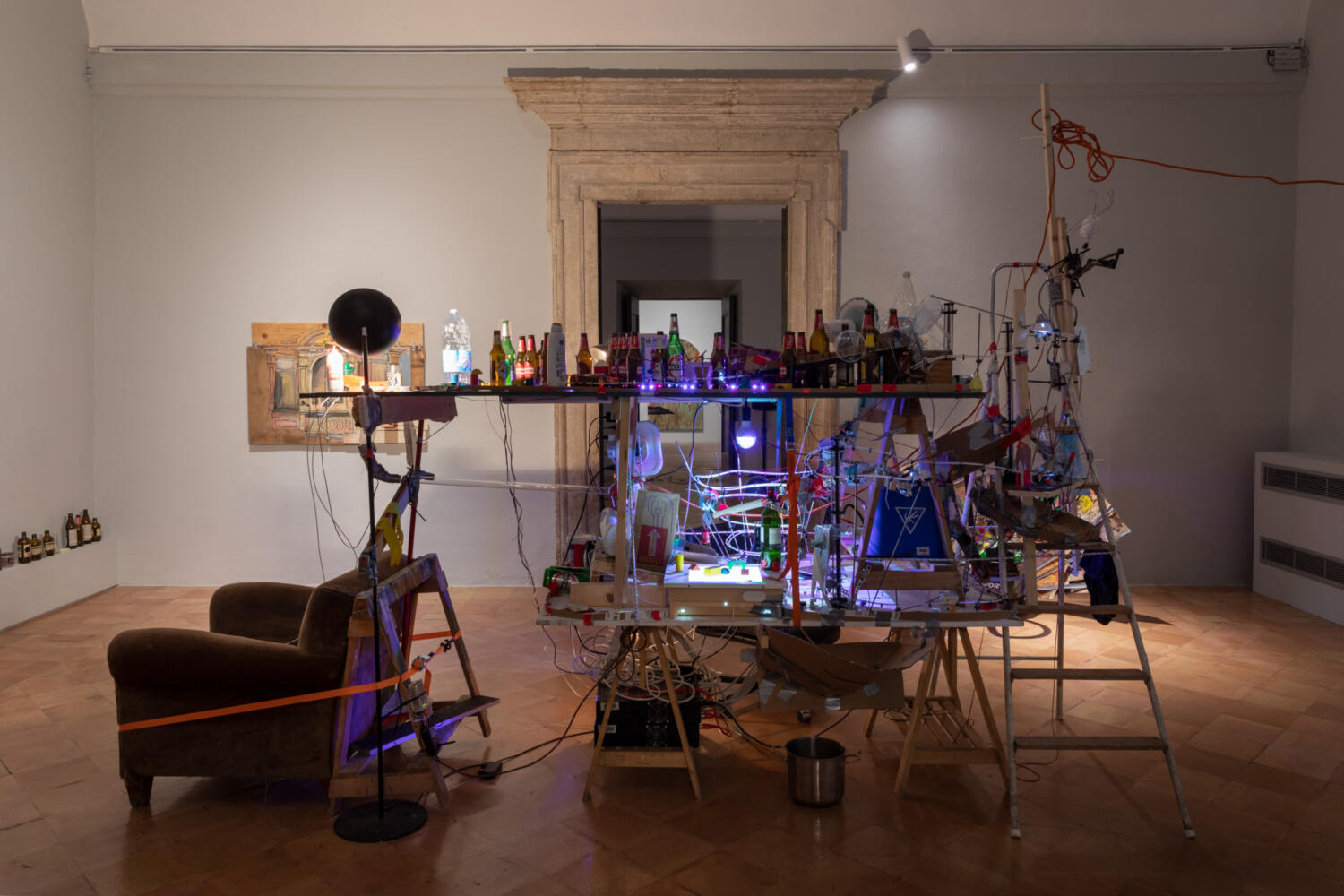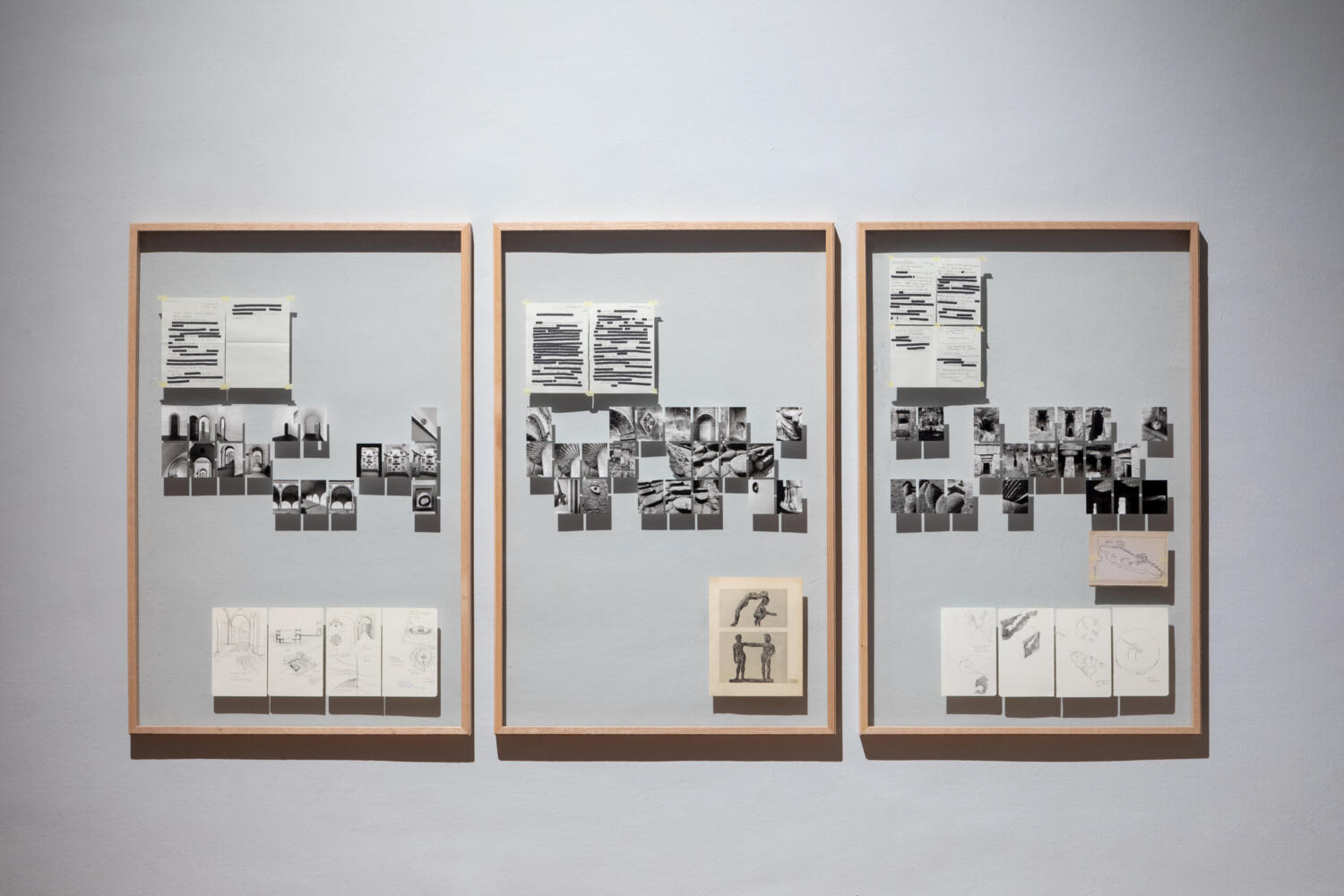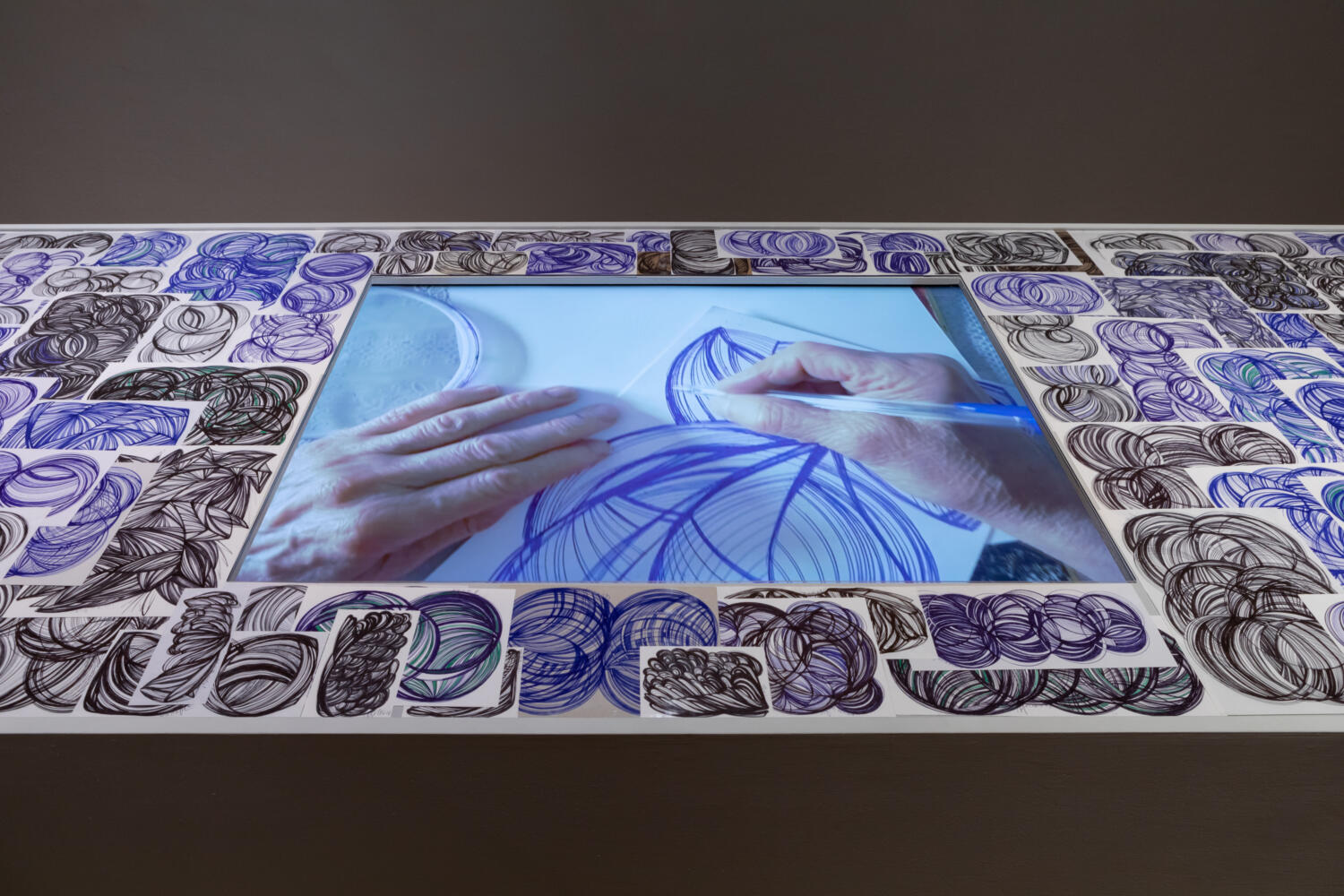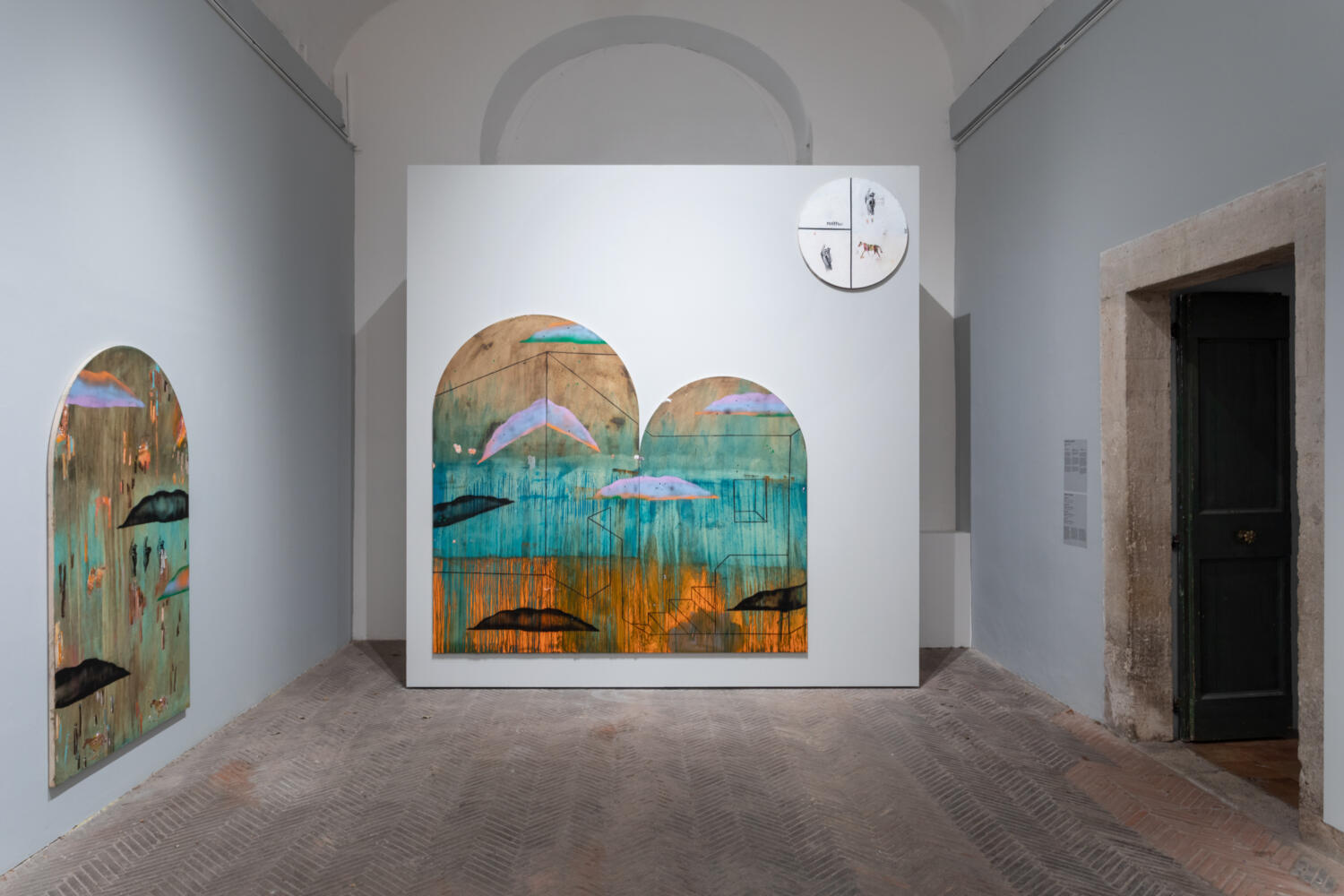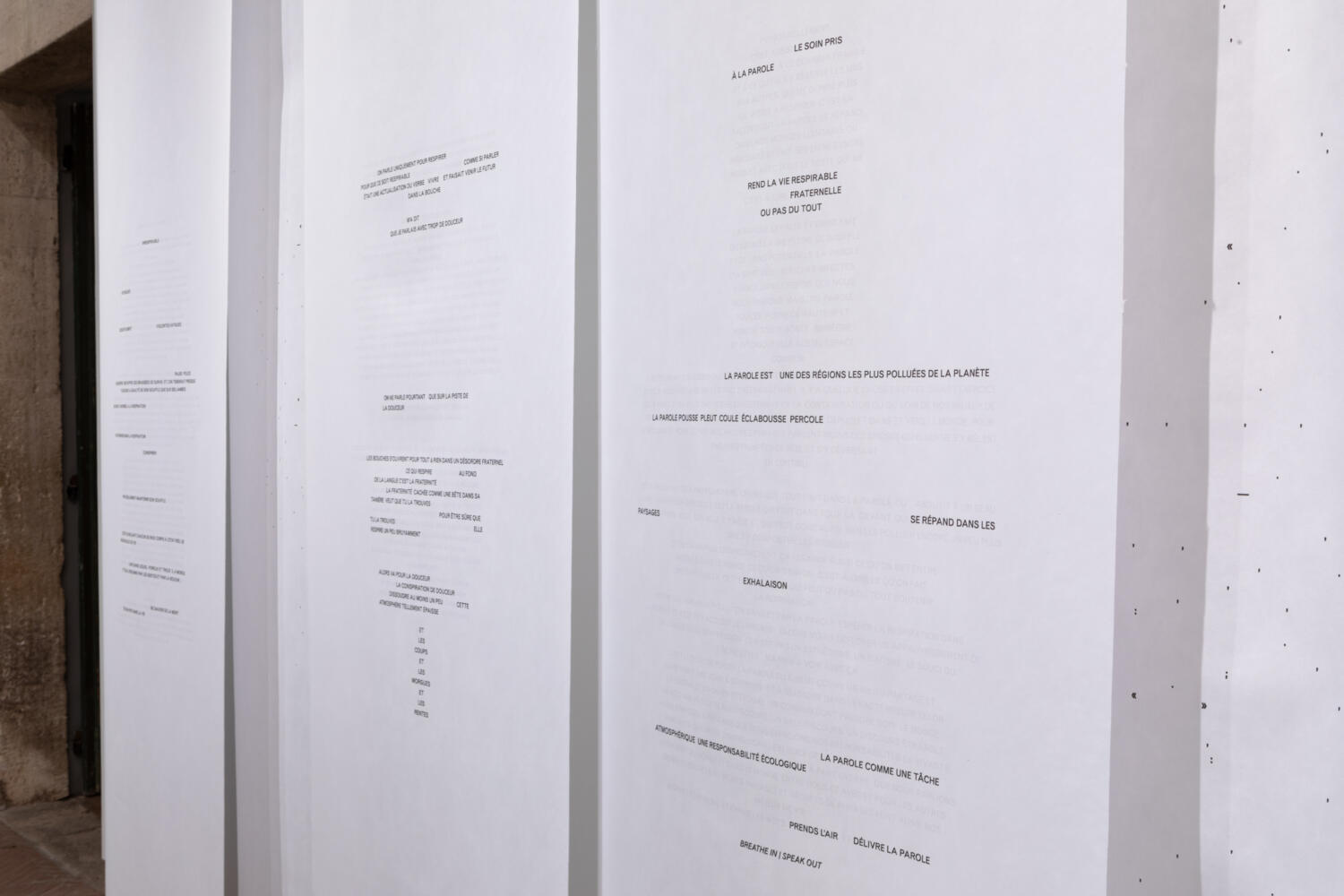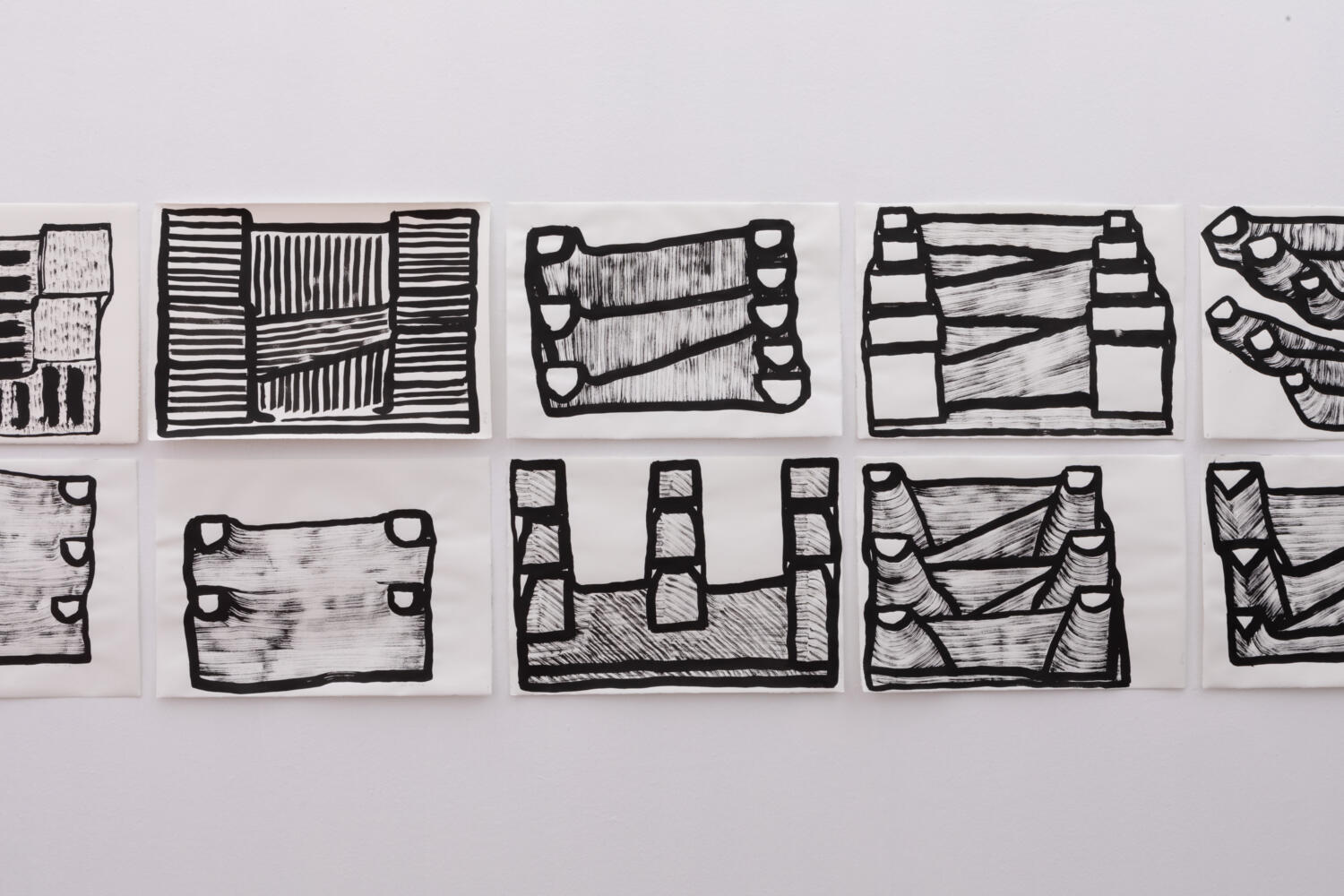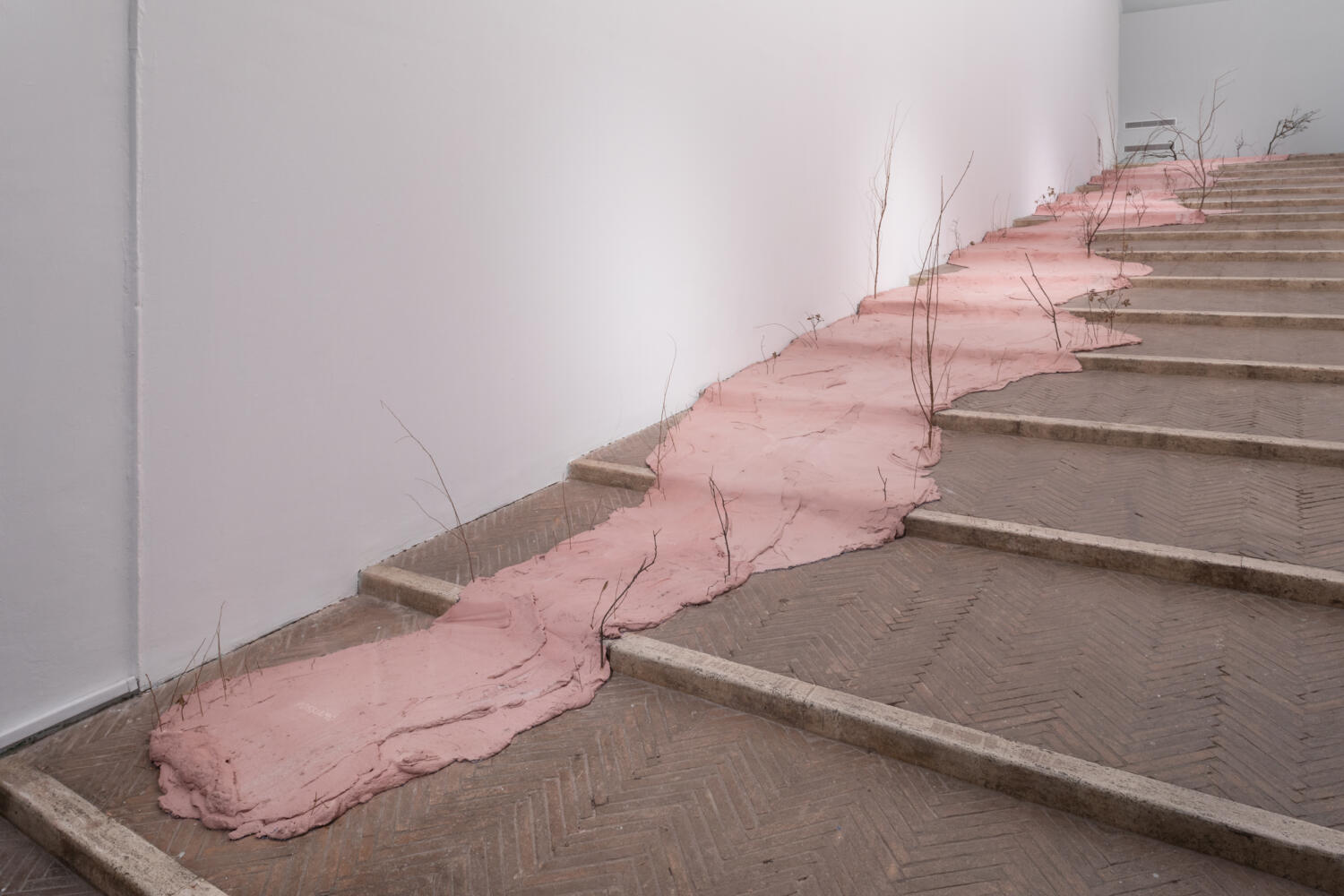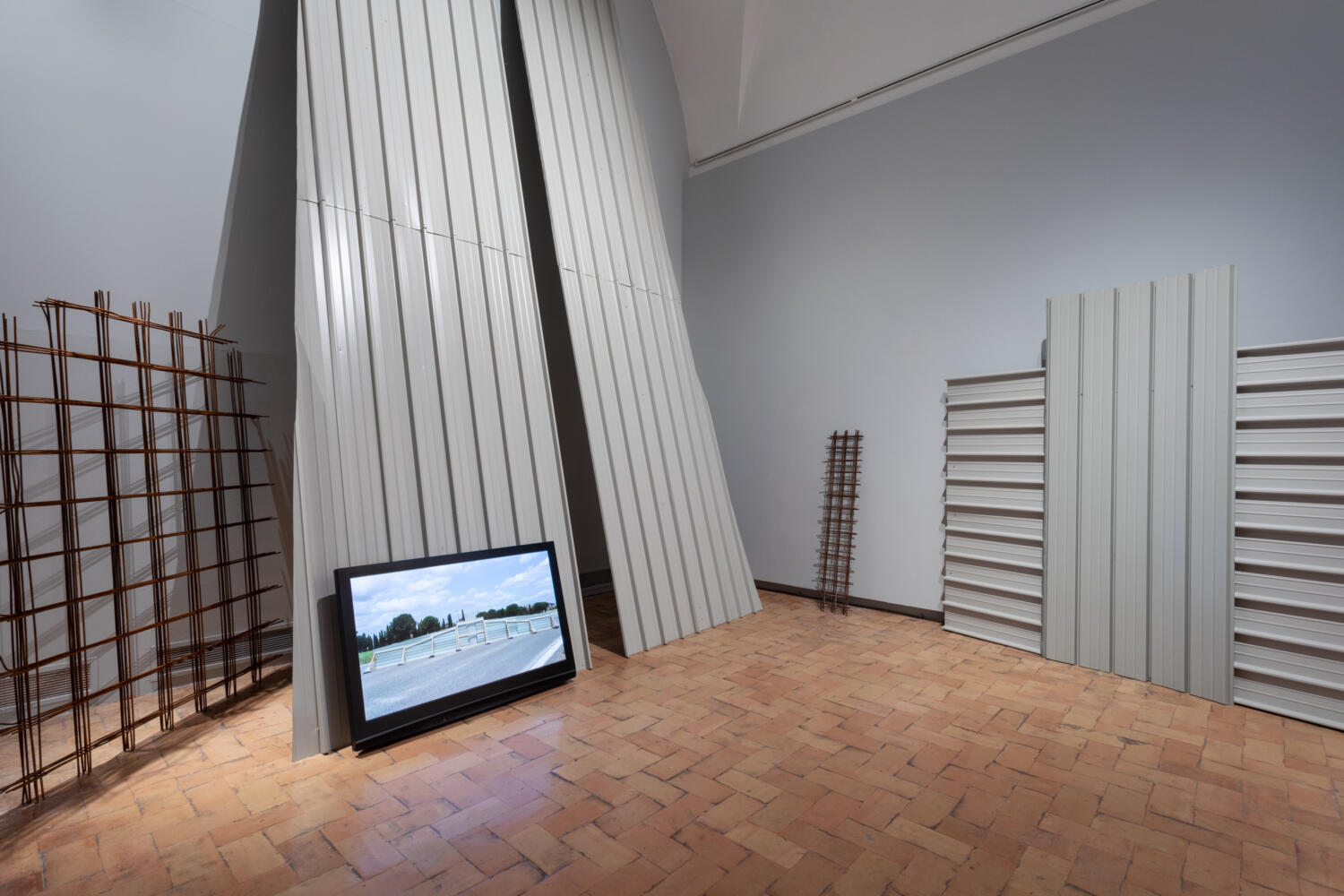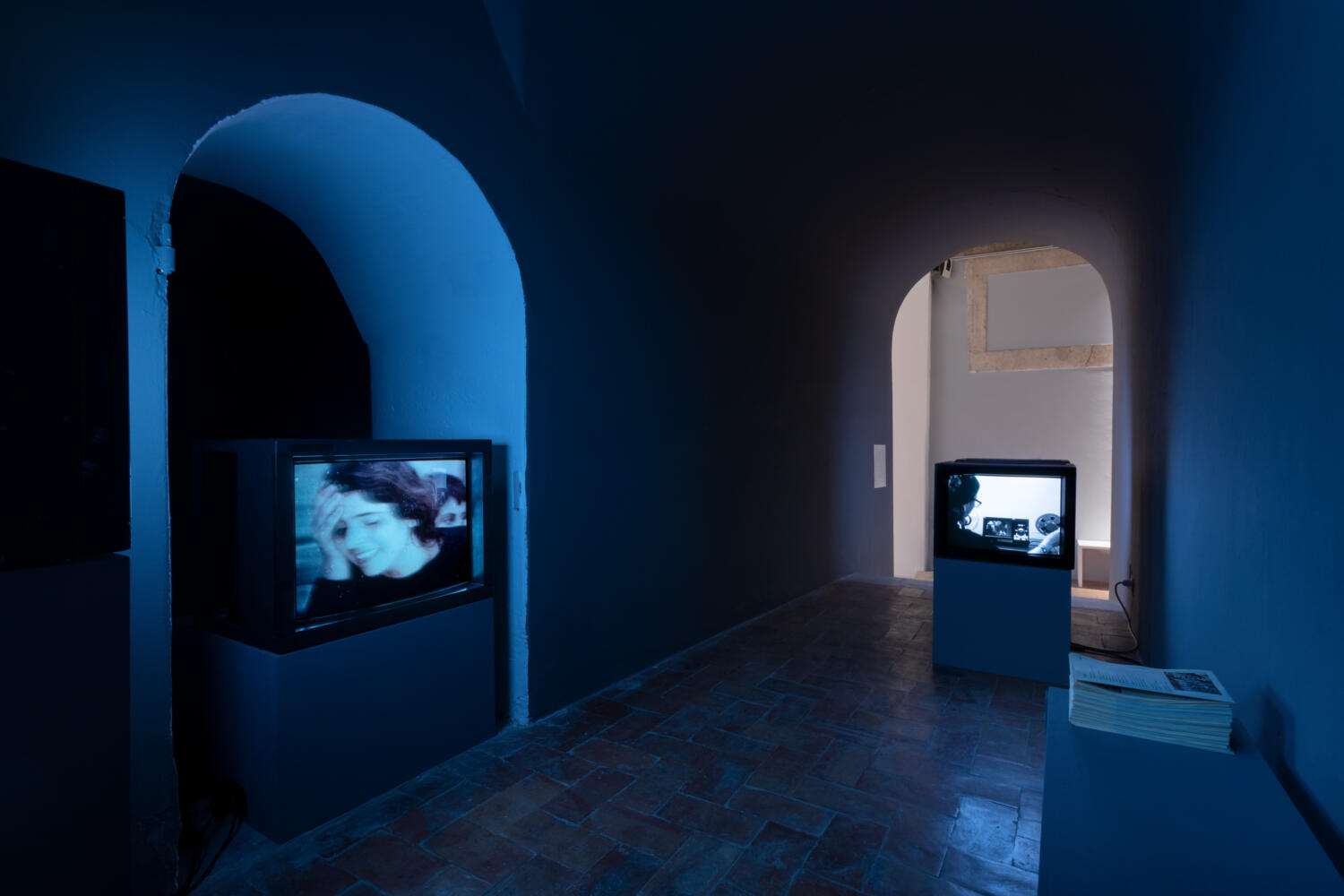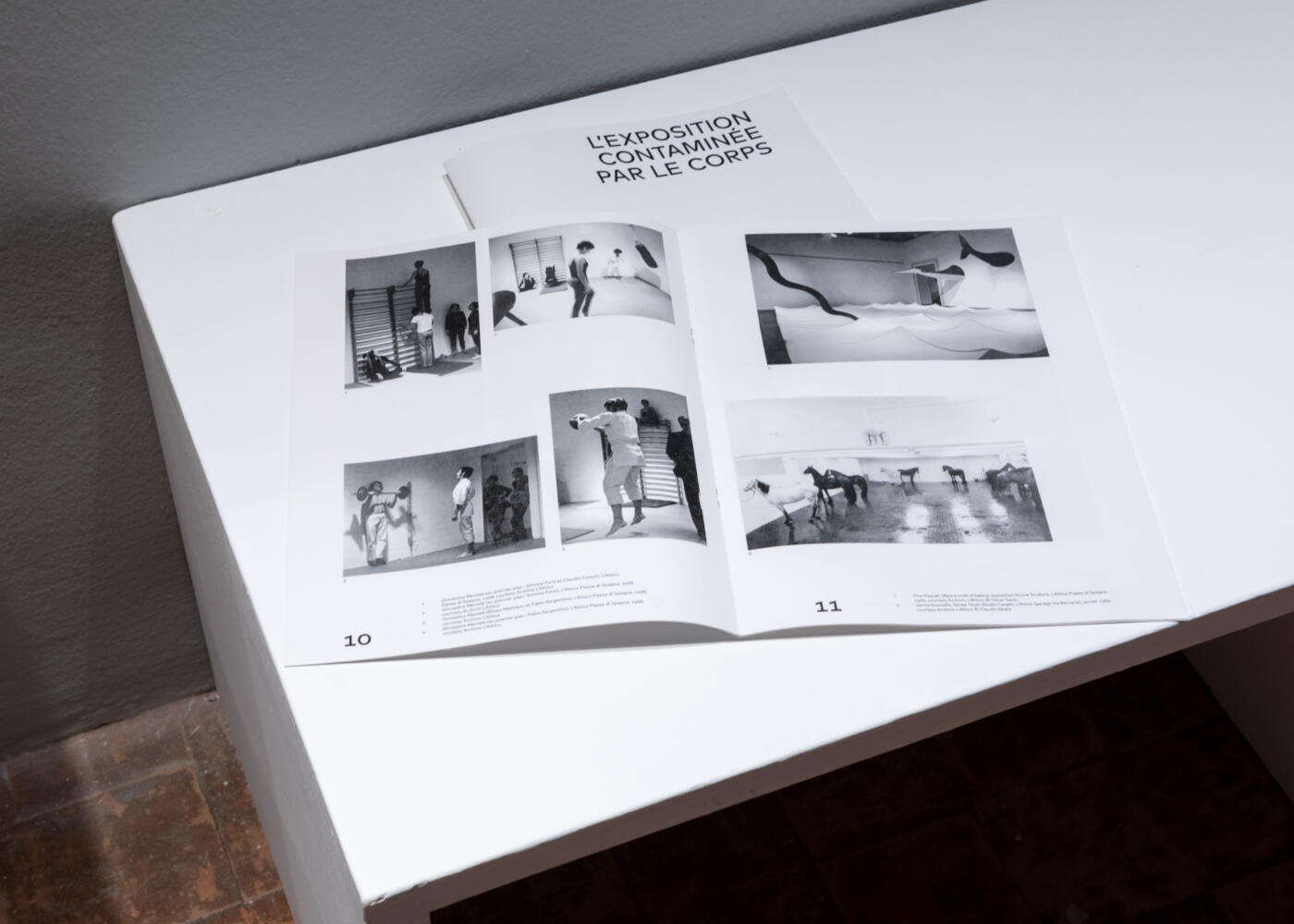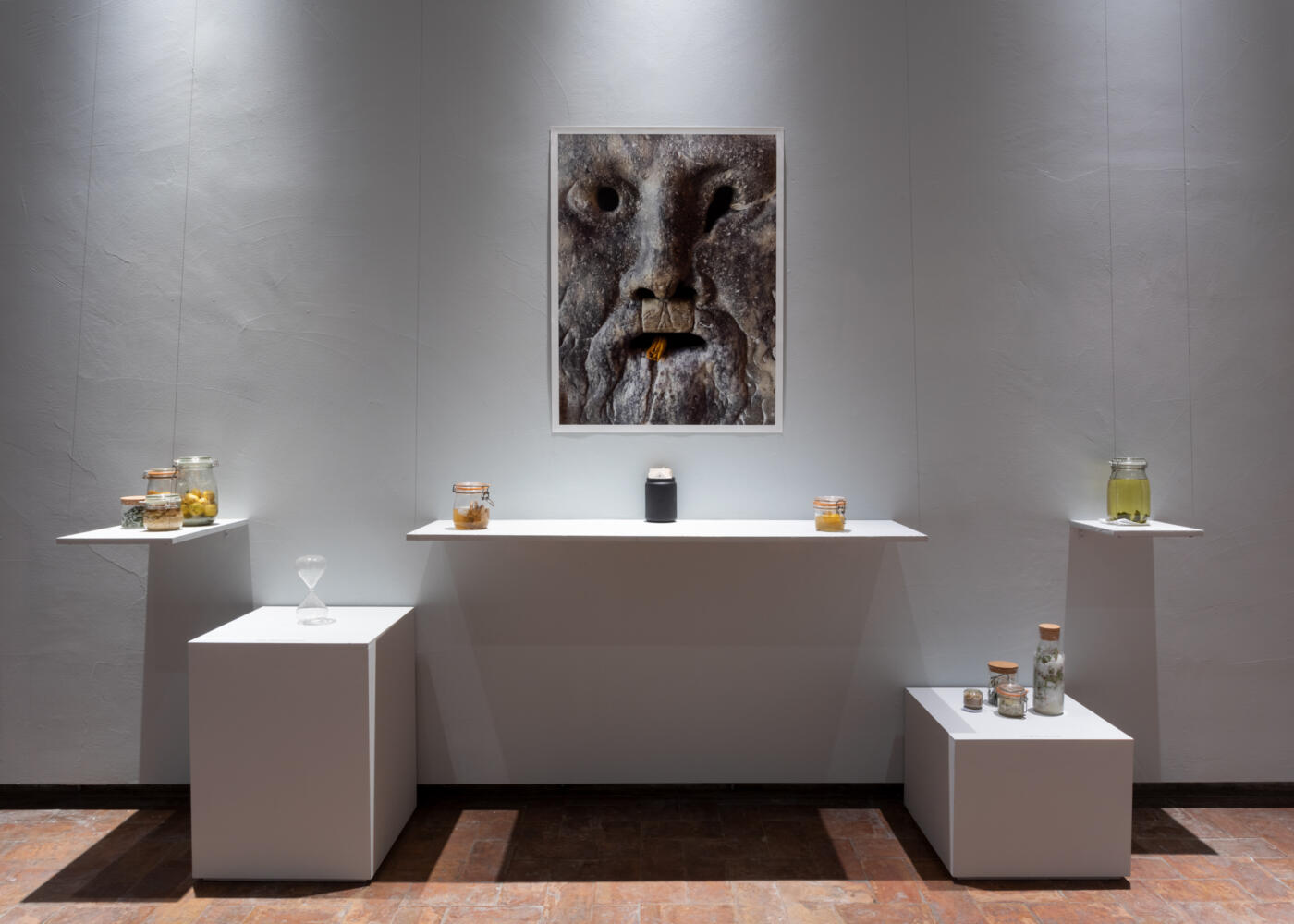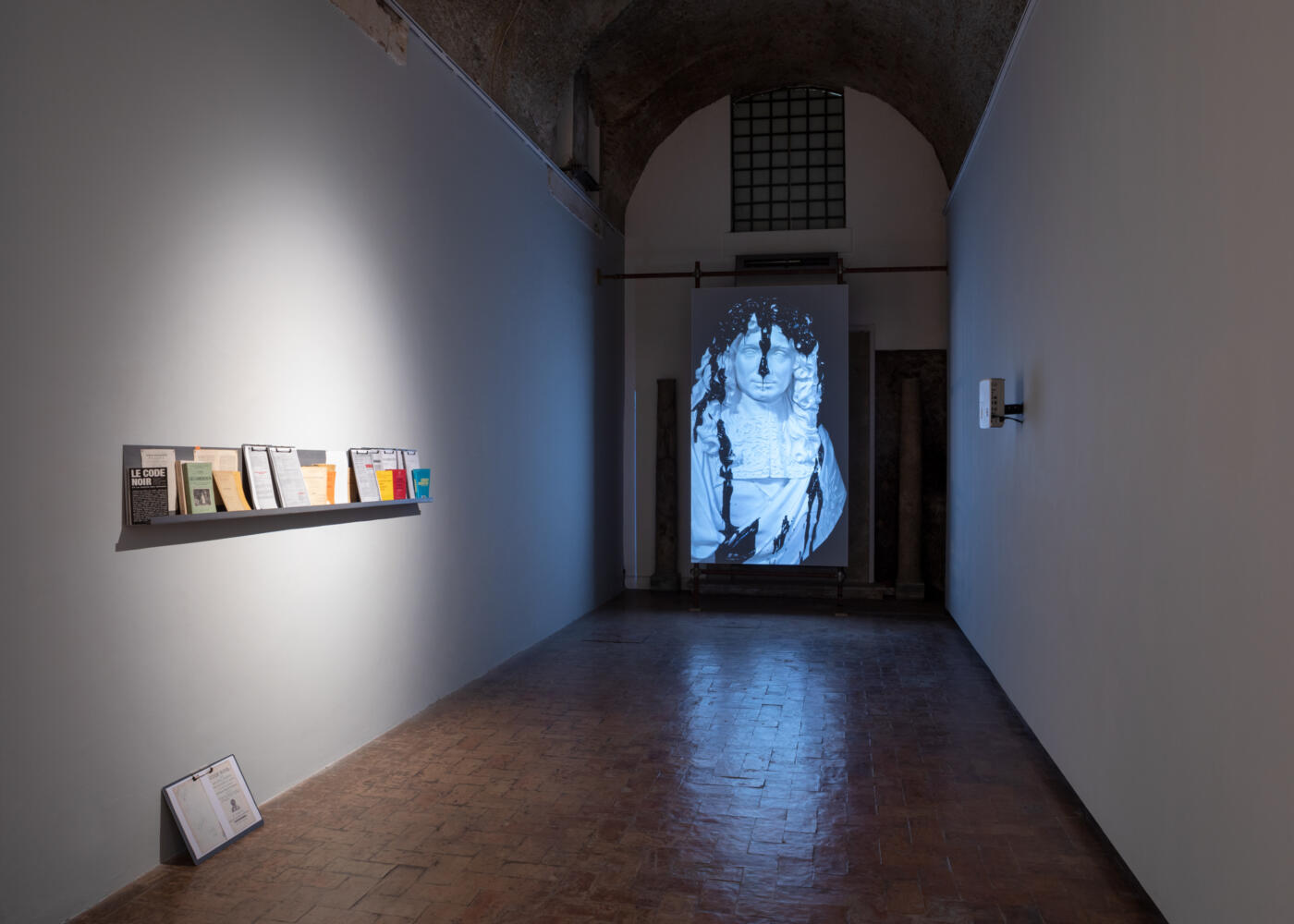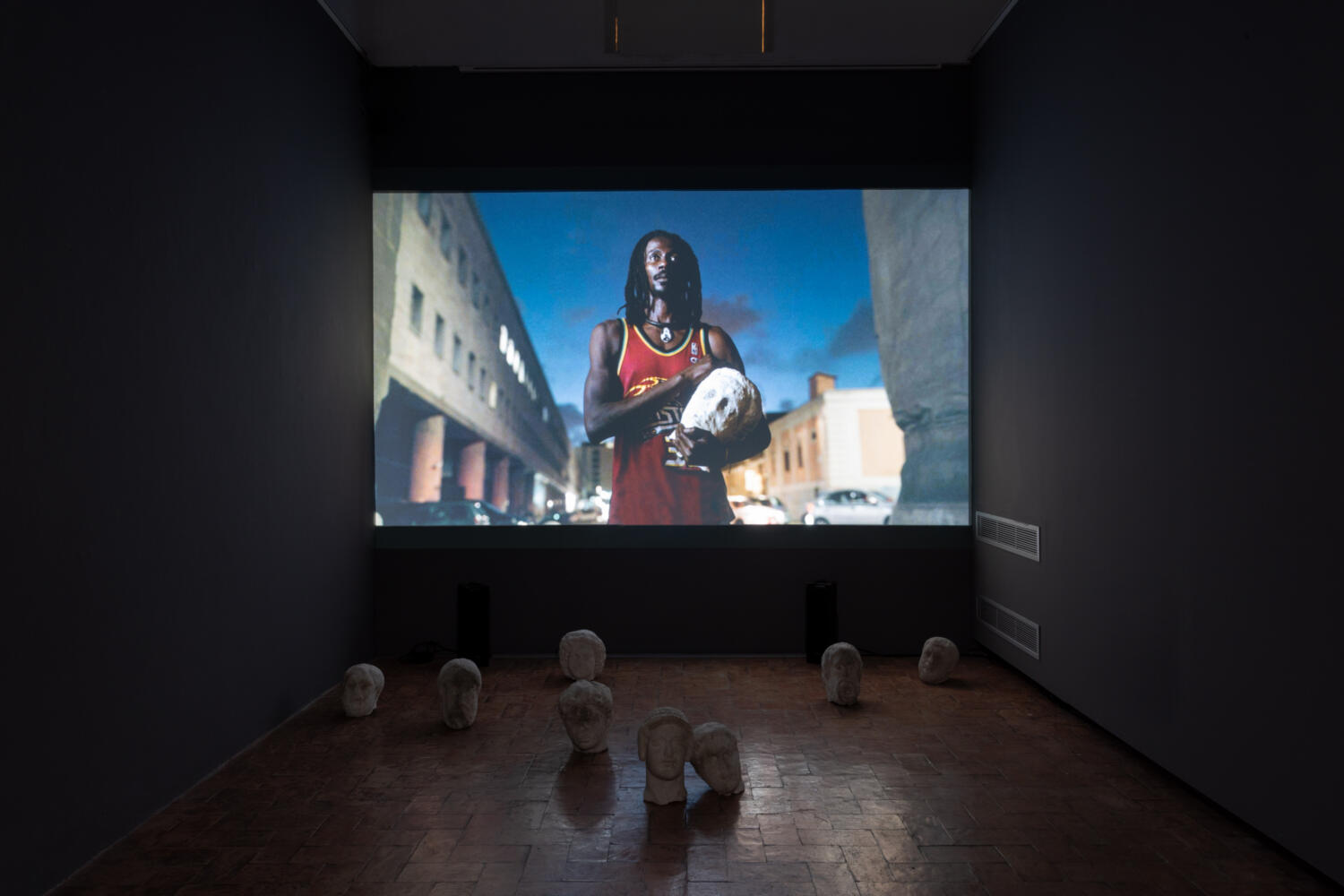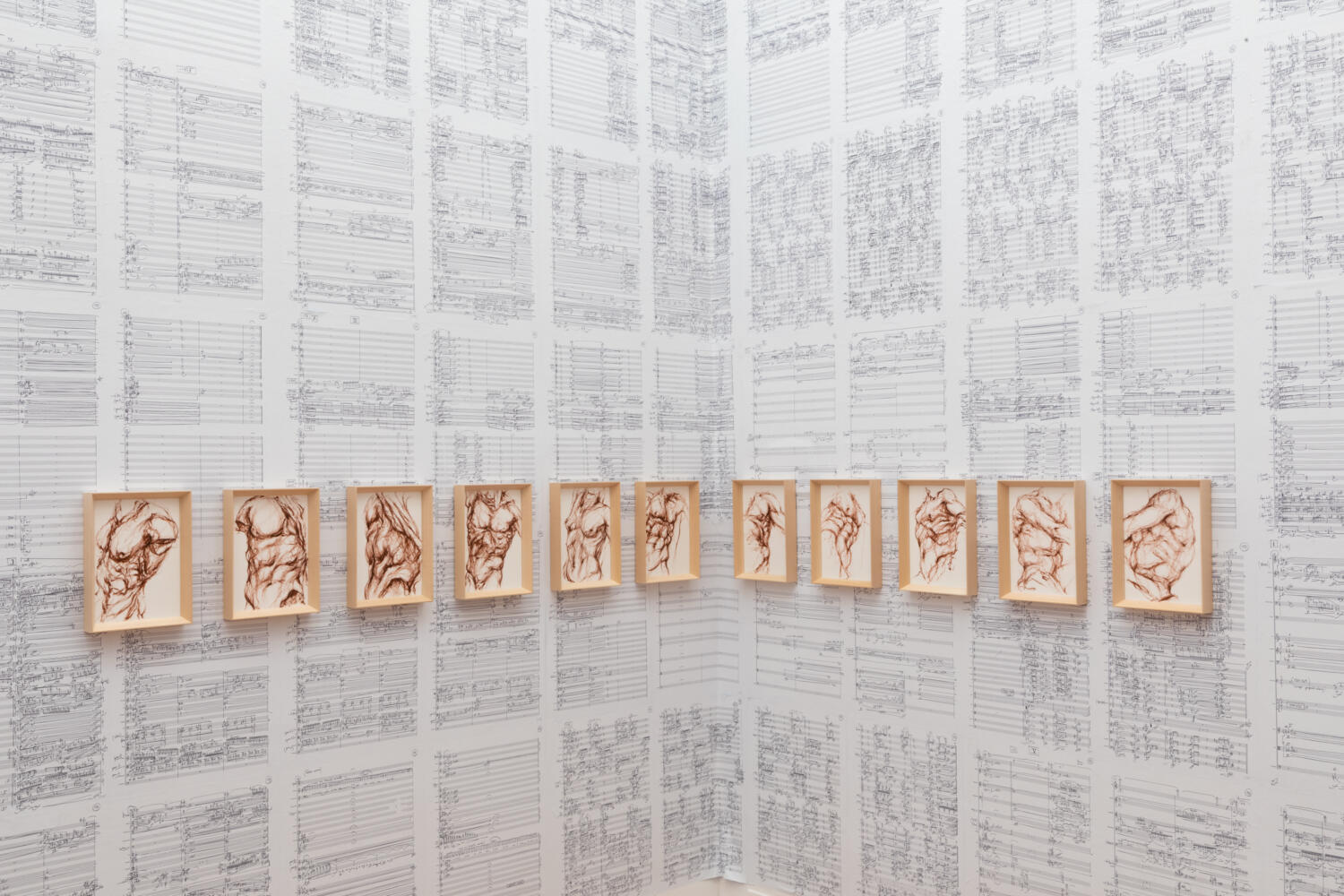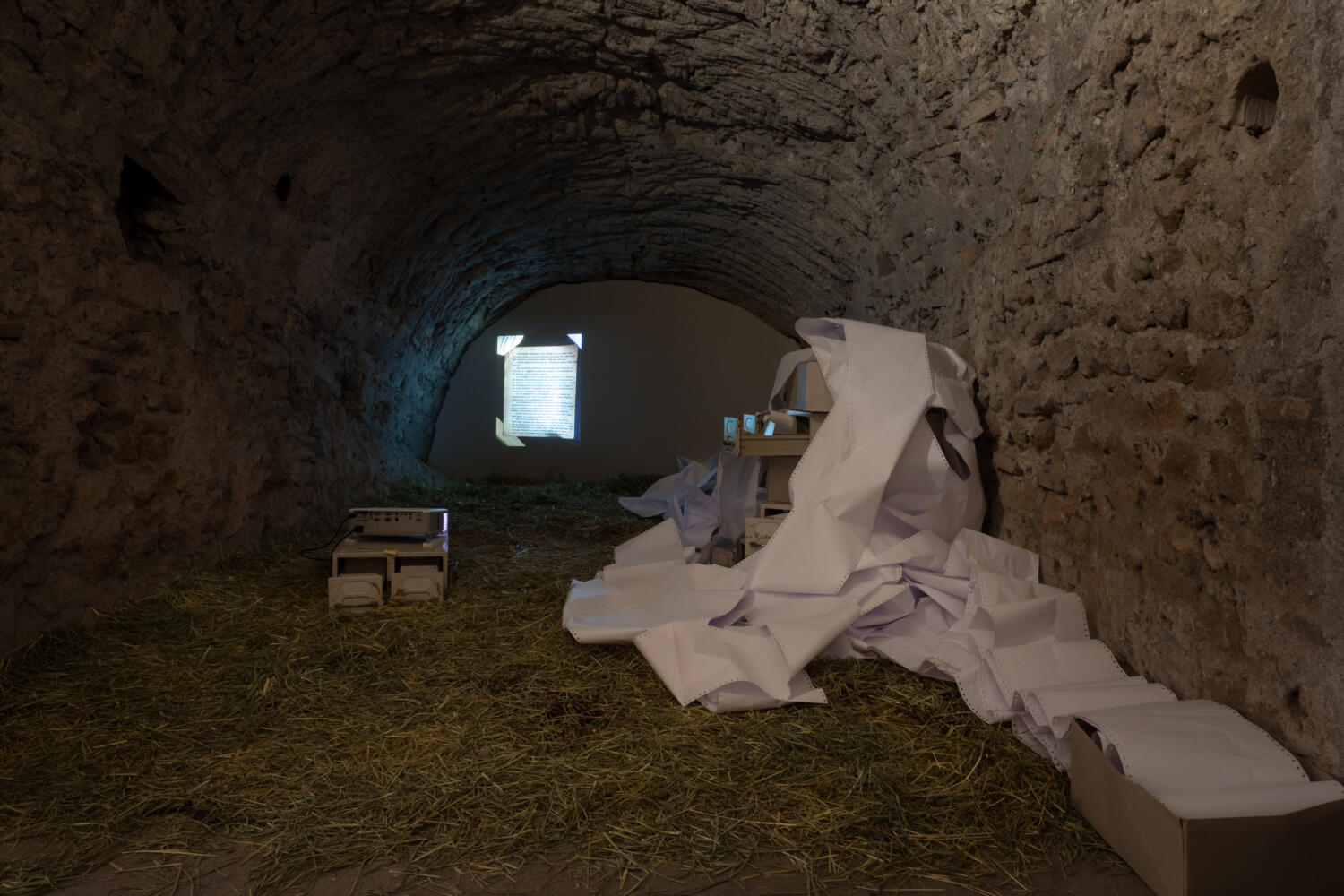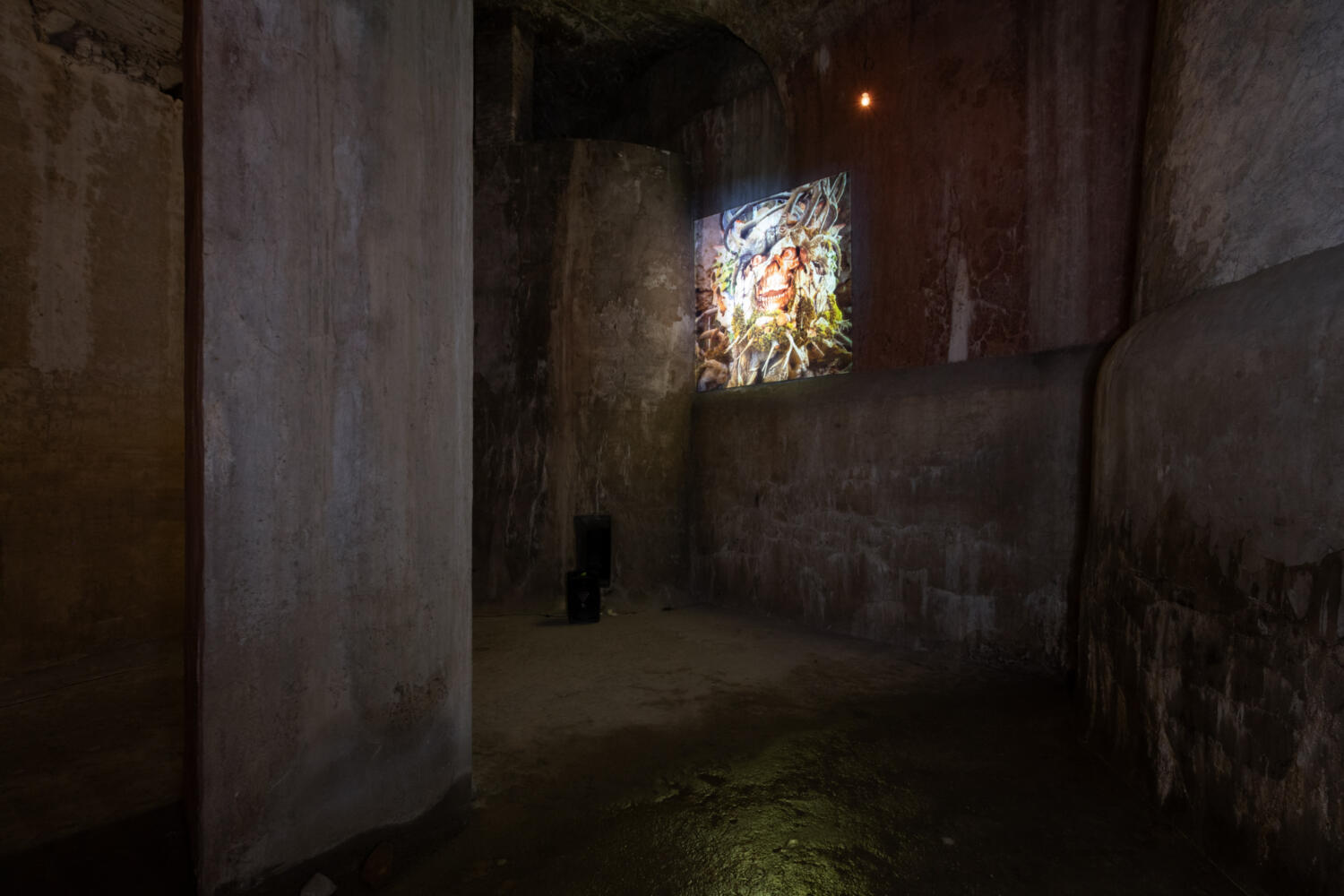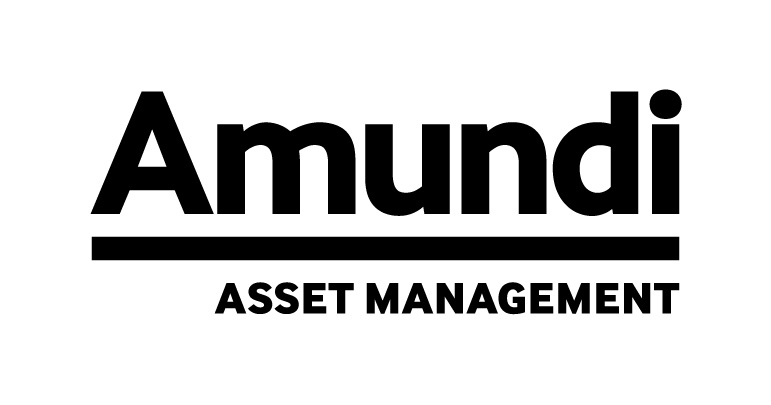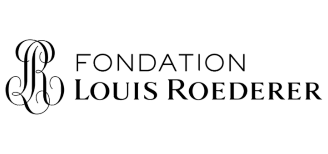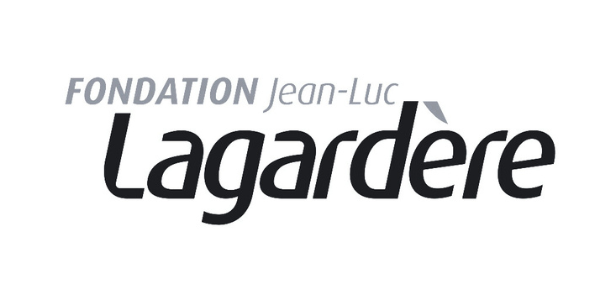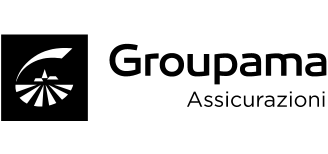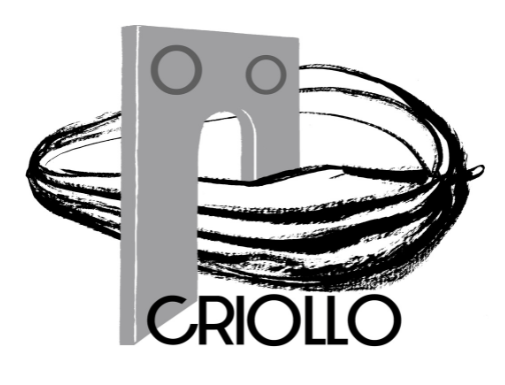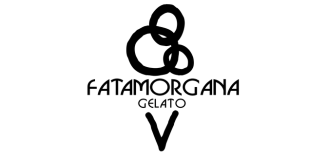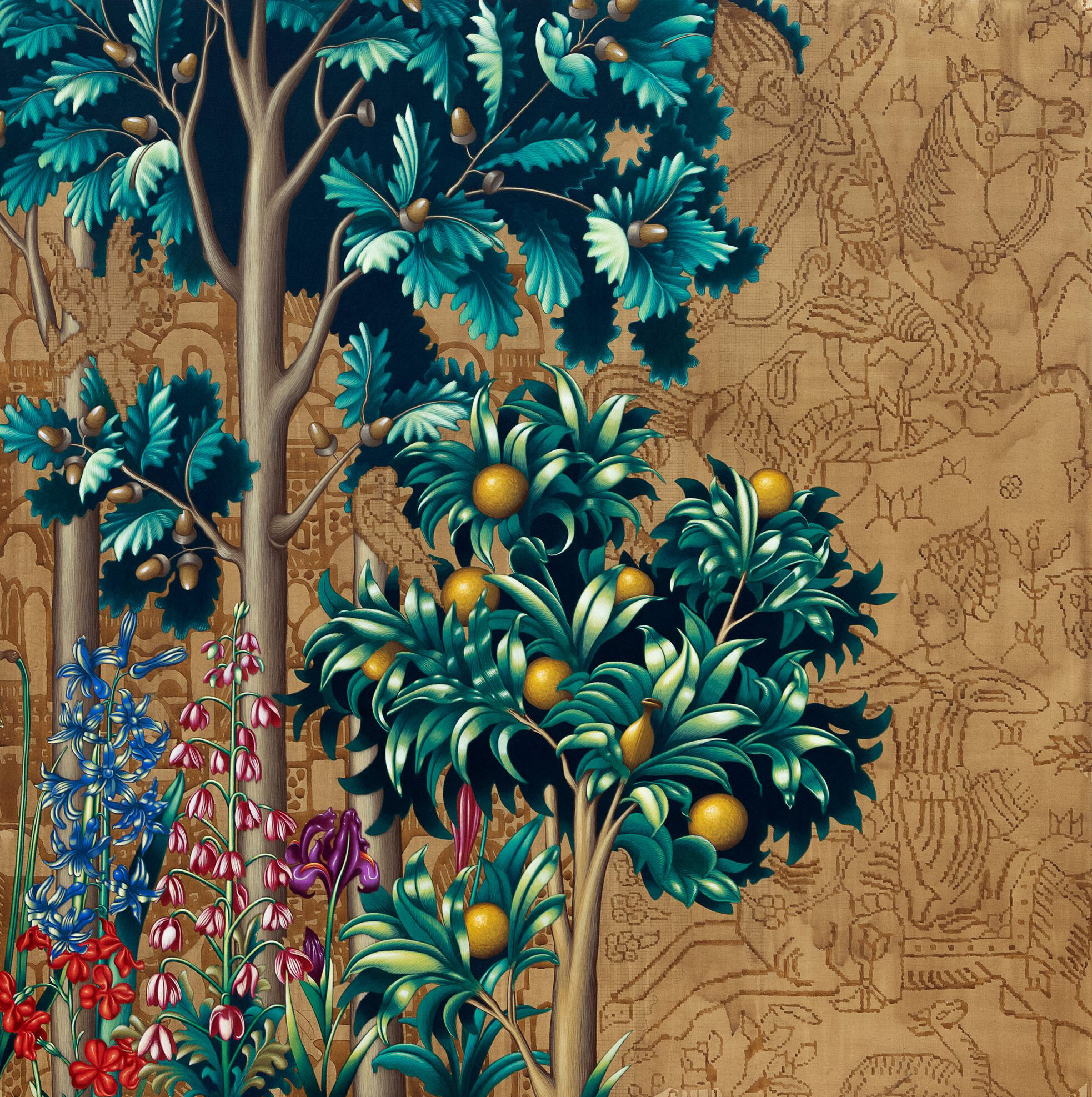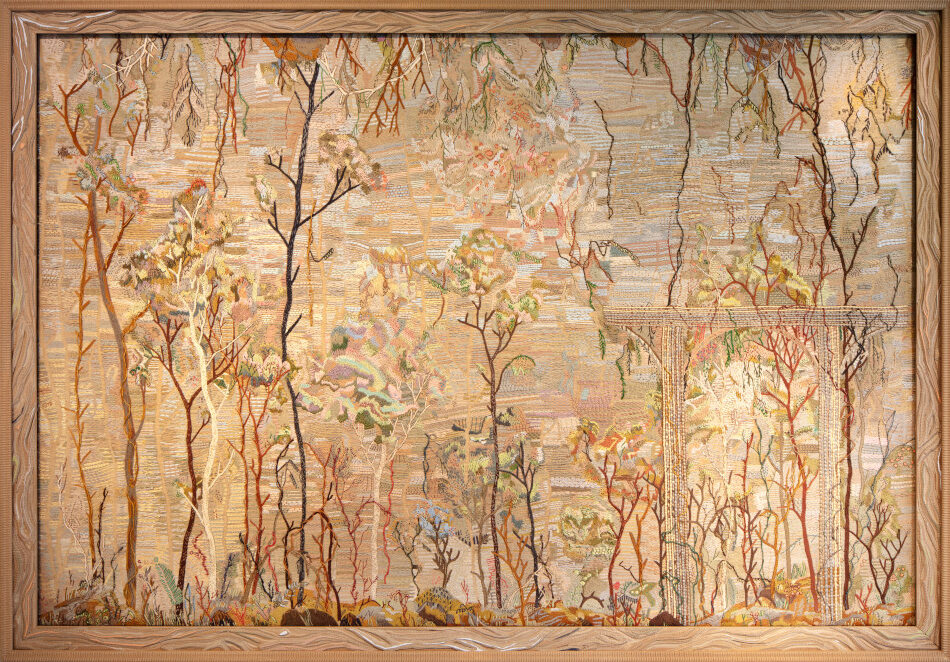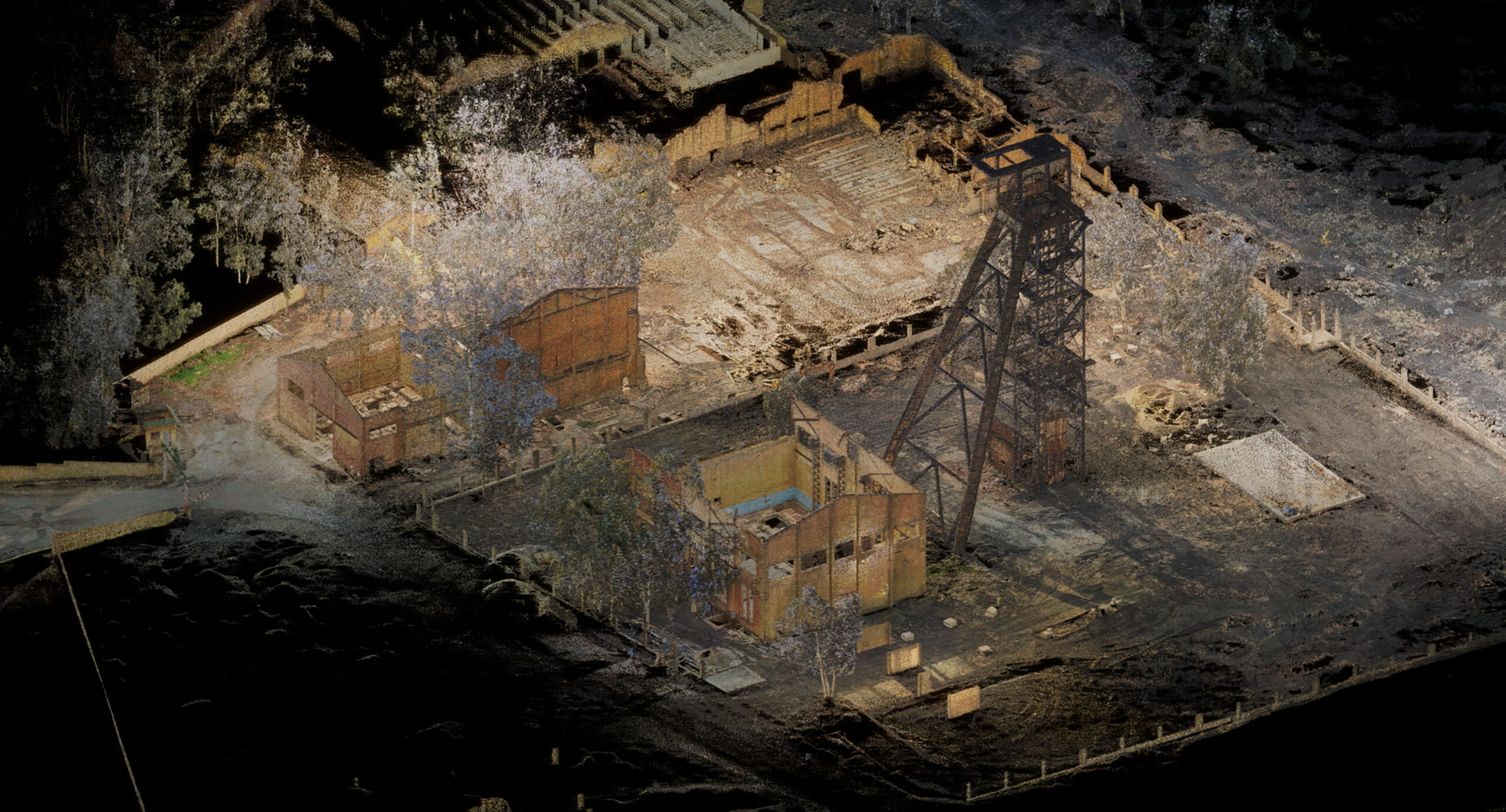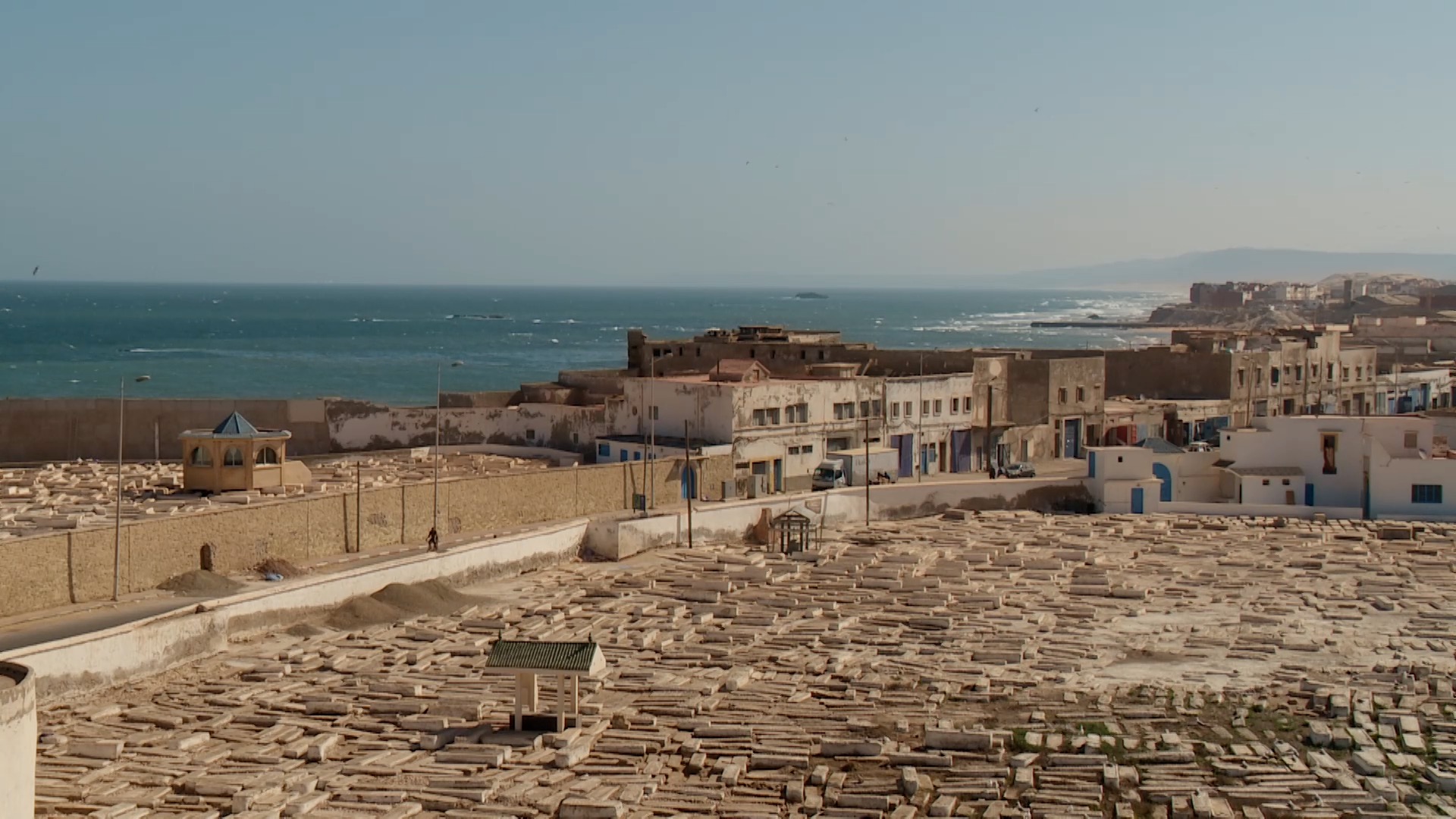Search
sparks sparkle
Fellows' exhibition
15.06 - 07.08.2022
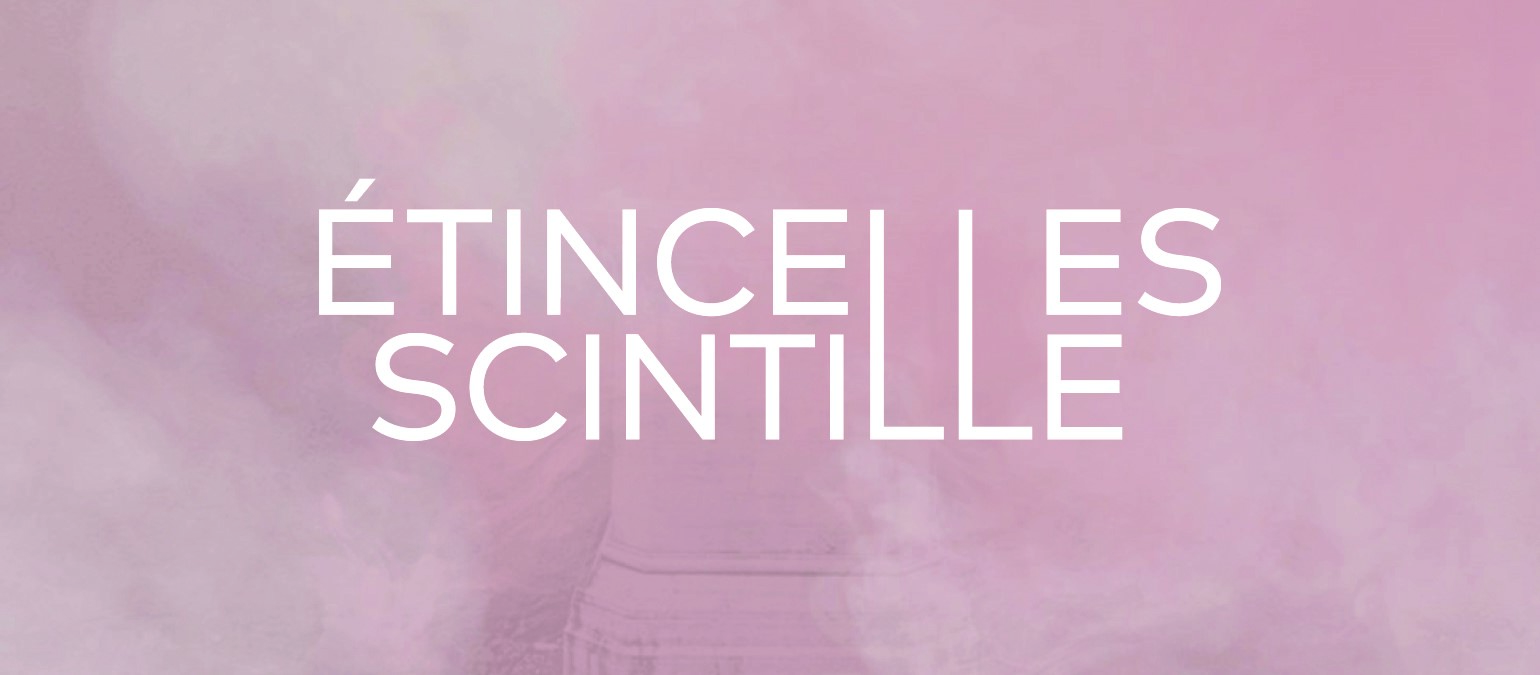
As it does every year in the run-up to summer, the Académie de France in Rome brings together in a group exhibition the projects of the sixteen boarders at the end of their year of residence at the Villa Medici. On this occasion, the works leave the intimacy of the studios and enter the exhibition halls, where they will be seen by the public.
The Étincelles / Scintille exhibition brings together the work of sixteen artists, authors and researchers who have spent a year in creative residency, experimentation and research at Villa Medici.
This artistic event lies at the crossroads of various practices, from the visual arts to musical composition, literature, architecture, stage direction, art history and theory.
More than an exhibition in the classical sense of the term, it’s more a restitution of 16 projects that testify to a singular moment in their careers: the residency as a laboratory for experimentation. What does the experience of cohabiting individualities and meeting so many different practices produce? From studio walls to exhibition halls, how do you give shape to an idea or a research project? These questions accompany a journey of multifaceted proposals, served by a spatial layout that offers autonomy to each project while preserving its unity.
The title, Étincelles / Scintillesuggests the idea of creation, but also recalls both discord (“to make sparks”) and understanding (“the spark has occurred”). This highly visual term, linked to light and fire and capable of expressing the vitality of the residents’ projects, evokes the speed of the inevitable temporality of a residency year coming to an end, and the desire of the residents to leave a trace by restoring the research carried out during their stay in Rome. Étincelles / Scintille is presented as a journey of sometimes obvious, sometimes more subtle correspondences between projects that present recurring themes: accumulation, the reiteration of gestures and signs, political reflection in the artistic field, the representation of fragmented bodies, the relationship between natural and artificial landscape. These themes recur throughout the projects presented in the Villa Medici spaces, in a rhythm that seeks to highlight possible dialogues and affinities between the various works.
For the duration of a summer, the exhibition rooms at Villa Medici are transformed into a space for reflection and experimentation, welcoming free proposals in a wide variety of forms, whether expositive or performative, finished or unfinished. These interventions take us to the places – imaginary or physical, starting with Rome – that nourish the most contemporary creation, and extend beyond the framework of the exhibition.
The opening evening on June 14 will feature four performances: the first by Guy Régis Jr, excerpt from the multidisciplinary work Quel dernier grand conflit pour satisfaire la haine entre les humains, in collaboration with composer Kaoli Ono, soloist Cyrielle Ndjiki Nya and with the participation of the Piazza Vittorio Choir; the second by American artist Emily Mast, who at the invitation of Julie Pellegrin will perform IFIF, an age-old group ritual carried out with a dozen performers on the Villa Medici piazzale. It takes the form of a game using chance, dance and trance to open up new ways of being together. Los Angeles-based artist Emily Mast combines visual art, live performance and activism to explore power dynamics and the subversion of seemingly immutable hierarchies. The third performance will unite three residents around an unpublished text by Kaouther Adimi entitled Versailles. Read and directed jointly by Guy Régis Jr. and Kaouther Adimi, it will be accompanied by music composed by Hèctor Parra, who will perform it on piano with Imma Santacreu . Finally, Marielle Macé will be combining the visual poem she created with graphic designer Francesco Armitti for the Les pensionnaires exhibition, with a performance reading of Breathe in / Speak out; in this previously unpublished text, she explores the relationship between speech and breathing, and uses phrases to try to clean up our atmospheres at least a little.
Étincelles / Scintille is accompanied by a catalog featuring projects by residents of the Académie de France in Rome. The publication also includes a series of collective pages devoted to dialogues and exchanges between the boarders: these sections are presented as “intervals” within the catalog, leaving room for incursions, in-depth studies and free associations on various themes that have marked the boarders’ experience at Villa Medici. 
PRACTICAL INFORMATION
Opening hours:
Monday to Sunday (closed Tuesdays) 10:30am to 7pm (last entry at 6:30pm)
Friday and Saturday 10:30am to 8pm (last entry at 7:30pm)
The 2021-2022 fellows at Villa Medici
Kaouther Adimi, writer

Born in Algiers in 1986, Kaouther Adimi is a writer, playwright and screenwriter. After two first books, Des ballerines de papicha (Prix de la Vocation 2011) and Des pierres dans ma poche, she enjoyed major success with Nos richesses (Prix Renaudot des lycéens and Prix du style), published by Seuil in 2017, an evocation of the legendary bookseller and publisher Edmond Charlot. Her fourth novel, Les petits de décembre (Prix du roman métis des lycéens), was published in 2019.
His work blends archives and fiction, reality and imagination, appropriating places to transform them, unearthing forgotten stories to put them back into narrative.
Kaouther Adimi contributes to numerous magazines and also writes for theater and film.
At the Villa Médicis, she is working on her fifth novel, Au vent mauvais, in which, through the intersecting destinies of three characters, she paints a sweeping portrait of Algeria, spanning almost a century, from colonization to the struggle for independence, right up to the summer of 1992, when the country plunged into civil war. Au vent mauvais will be published in September 2022 by Editions du Seuil.
Directly inspired by her residency, Kaouther Adimi imagined Le paon rose, a tale written for France Inter’s OLI program, set to music by Hèctor Parra and Imma Santacreu for the Nuit blanche (November 2021).
Iván Argote, visual artist and director
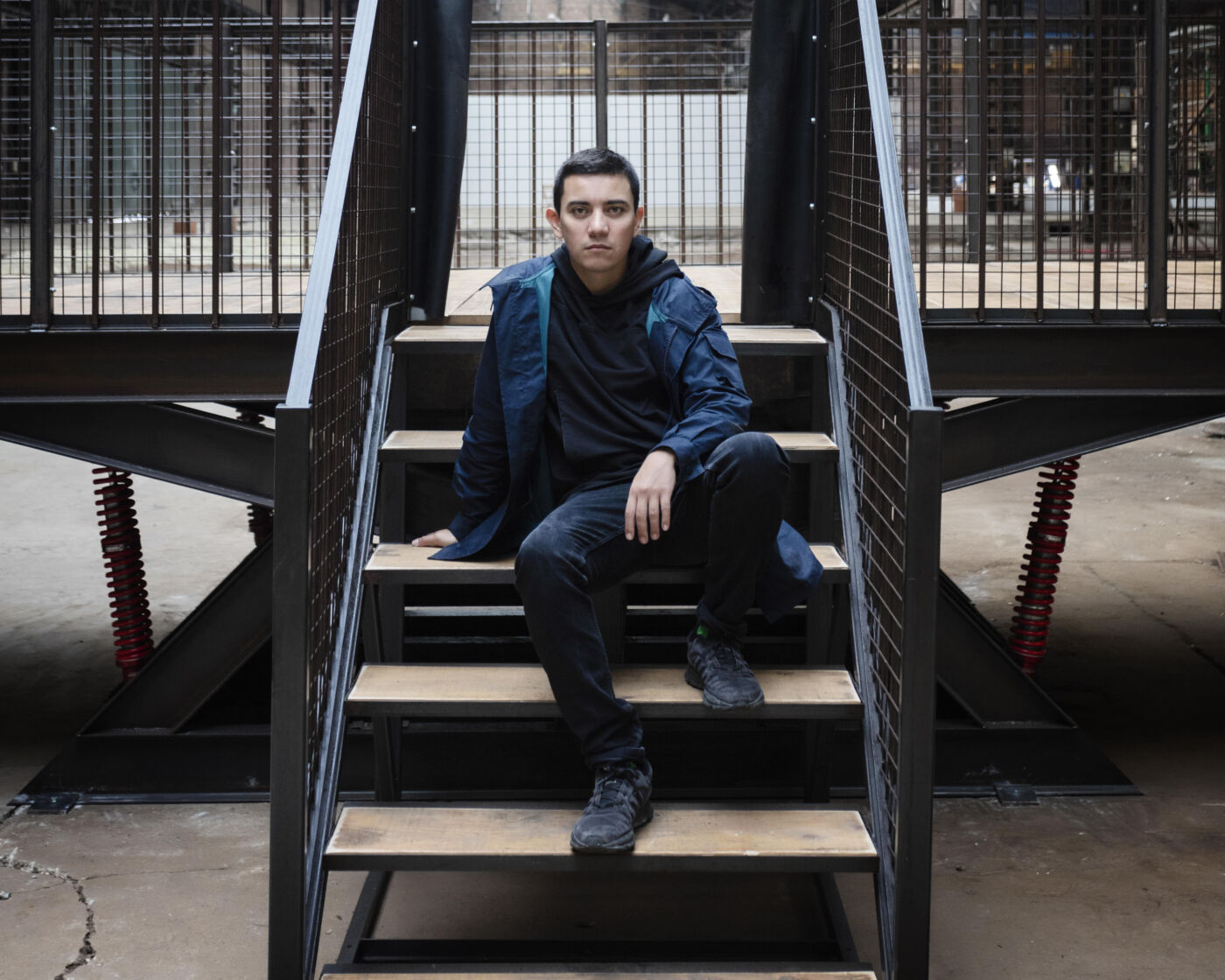
Born in Bogotá, Colombia, in 1983, Iván Argote is a visual artist.
Through his sculptures, installations, films and interventions, Iván Argote questions our intimate relationship with others, institutions, power and belief systems. He develops strategies based on tenderness, affect and humor, through which he suggests critical approaches to dominant historical narratives and attempts to decentralize them. In his interventions on monuments, large-scale installations and performances, Iván Argote proposes new symbolic uses of public space. His work is included in many renowned collections worldwide, including those of the Guggenheim Museum (New York, USA), Centre Pompidou (Paris, France), ASU Art Museum (Phoenix, USA), Cisneros Fontanals Art Foundation (Miami, USA), Colección de Arte del Banco de la República (Bogota, Colombia), Kadist (San Francisco, USA) and MACBA (Barcelona, Spain).
His project at Villa Medici is rooted in the heritage of the city of Rome, and its distinction of possessing the largest number of obelisks in the world: eight from ancient Egypt, five from Roman times and countless others from the modern era. During his residency, Iván Argote intends to focus on these obelisks in both time and space. His project is twofold: a documentary film in which a pigeon takes us on a journey of discovery of Rome’s different obelisks, and a series of site-specific installations at Villa Medici around the obelisk itself.
.
Charlie Aubry, visual artist and musician
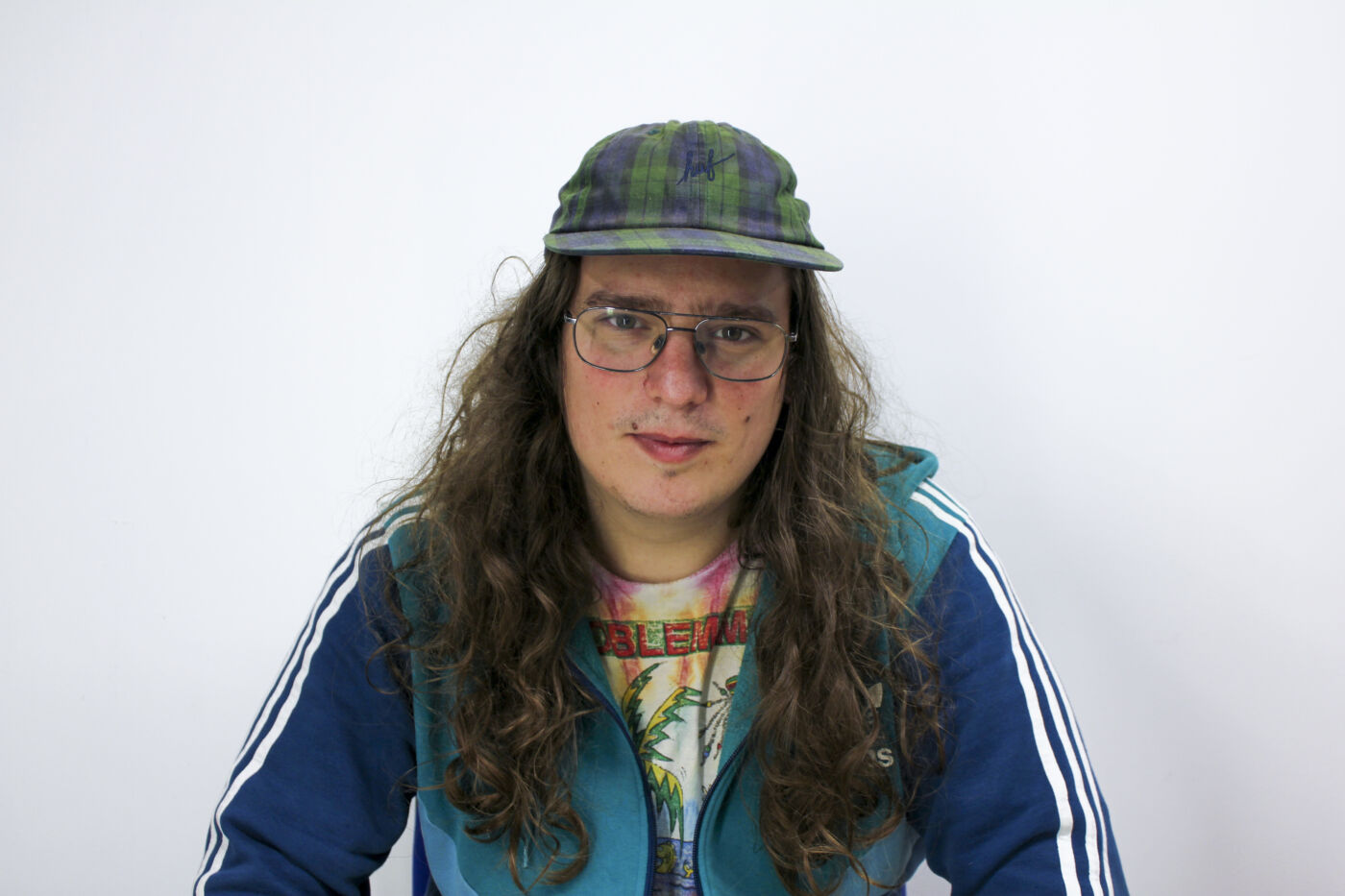
Born in Lillebonne (France) in 1990, Charlie Aubry is a visual artist.
Charlie Aubry graduated from the École Supérieure des Beaux-Arts de Toulouse (ISDAT) in plastic arts (DNAP, 2012) and plastic expression (DNSEP, 2014), with honors. He is developing a practice around electronics, through which he questions error as a learning method. His work begins with the hijacking of electronic objects, which quickly become real tools for sound and visual creation.
From 2013 onwards, he collaborated regularly with Compagnie Maguy Marin: in 2014, he composed the soundtrack for BiT, then for DEUX MILLE DIX SEPT , played live during the performance.In 2018, he signed the music and set design for the company’s latest creation, Ligne de Crète.
Charlie Aubry’s project at Villa Medici is an opportunity for him to continue the research he began with the installation p3.450 on the relationship between technology, usage and art. The p3.450 installation is a critical utopia, an anticipatory scenario that highlights certain technological uses and their limits. According to Charlie Aubry, this kind of speculative usage scenario is the concrete materialization of possible changes – whether technological or societal – through objects or devices. The artist’s installations and research question behaviors, and enable him to take a critical look at societal phenomena. During his residency, Charlie Aubry aims to write new scenarios of use and protocols, bringing in theoretical contributions and making them cohabit with his sculptural and installation practice.
.
Théodora Barat, visual artist and director
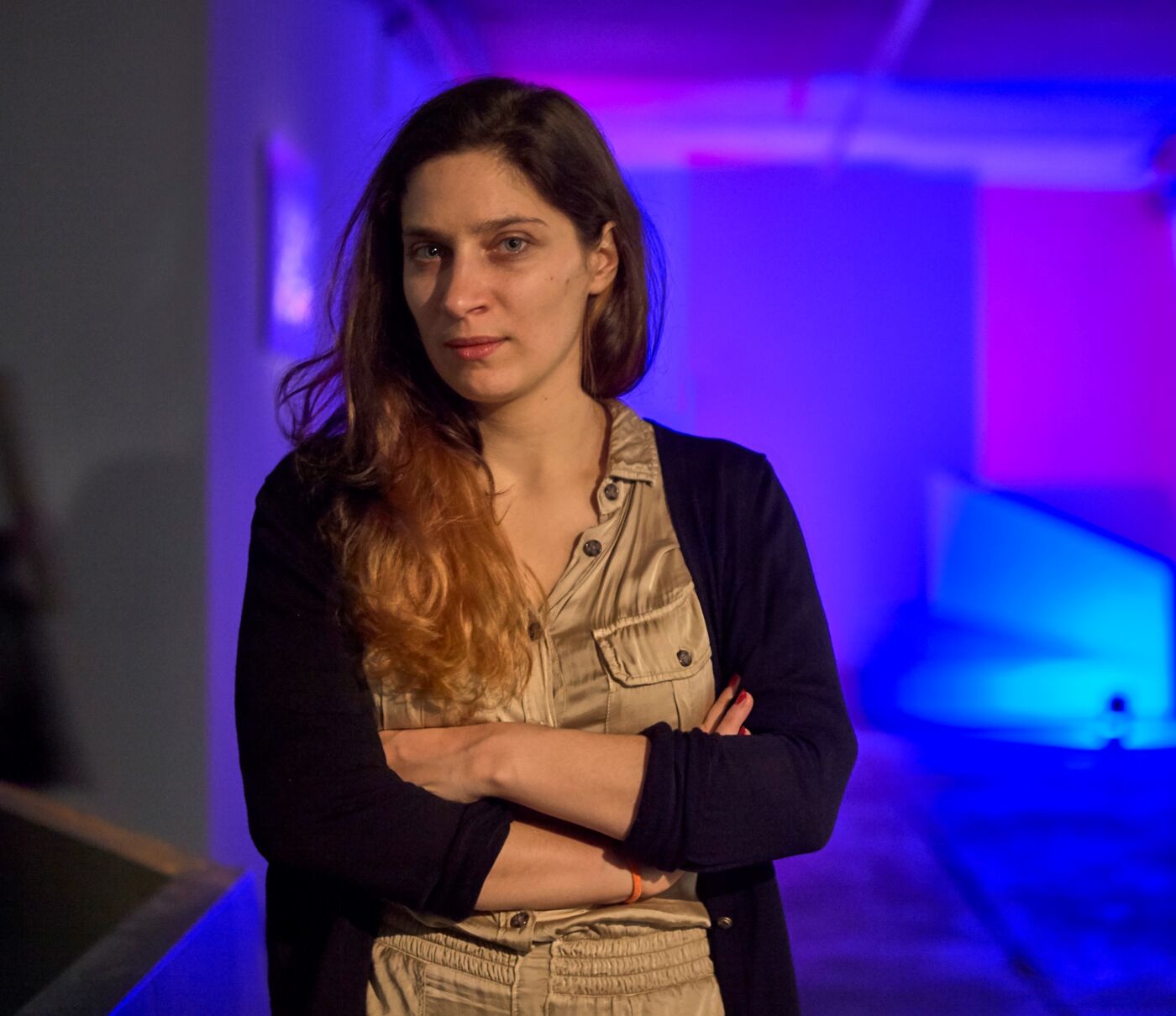
Born in 1985 in the Paris region, Théodora Barat is a visual artist and film-maker.
Théodora Barat studied at the Beaux-Arts de Nantes before joining Le Fresnoy – Studio National des Arts Contemporains. She is currently developing a research and creation thesis within the RADIAN doctoral program. Her awards include the Audi Talents Prize (2016), the FACE / Étant Donnés grant, the AIC (2020) and the Institut pour la Photographie’s research and creation support program (2021).
His work combines sculpture, film, installation, video and photography. He has been presented at K11 – Musea (Hong Kong), Cneai, Emily Harvey Foundation and Elizabeth Foundation for the Arts (New York), Nuit Blanche, Friche de la Belle de Mai, Mains d’Œuvres, Glassbox, CAC Vilnius (Lithuania), as well as in video programming at Palais de Tokyo and numerous international festivals.
Her project at Villa Medici focuses on studying and researching the possibility of documentary sculpture. How can a sculpture be given documentary value without becoming a reconstruction? How can we restore a historical context without turning it into an illustration? The project’s origins lie in Fellini’s background buildings, decommissioned Italian nuclear power plants and rationalist architecture. All are different incarnations of modernity, different witnesses to its shifts and mutations. The project aims to reveal the historicity and documentary value of these constructions. Based on this corpus, Théodora Barat will create a series of sculptures, installed and staged on the outskirts of Rome. This will blur the boundaries between filming, construction site and reconstruction. This reanimated past, these reactivated narratives, will make different temporalities collide. But this time, the remains will be fictional.
.
Samir Boumediene, researcher and storyteller
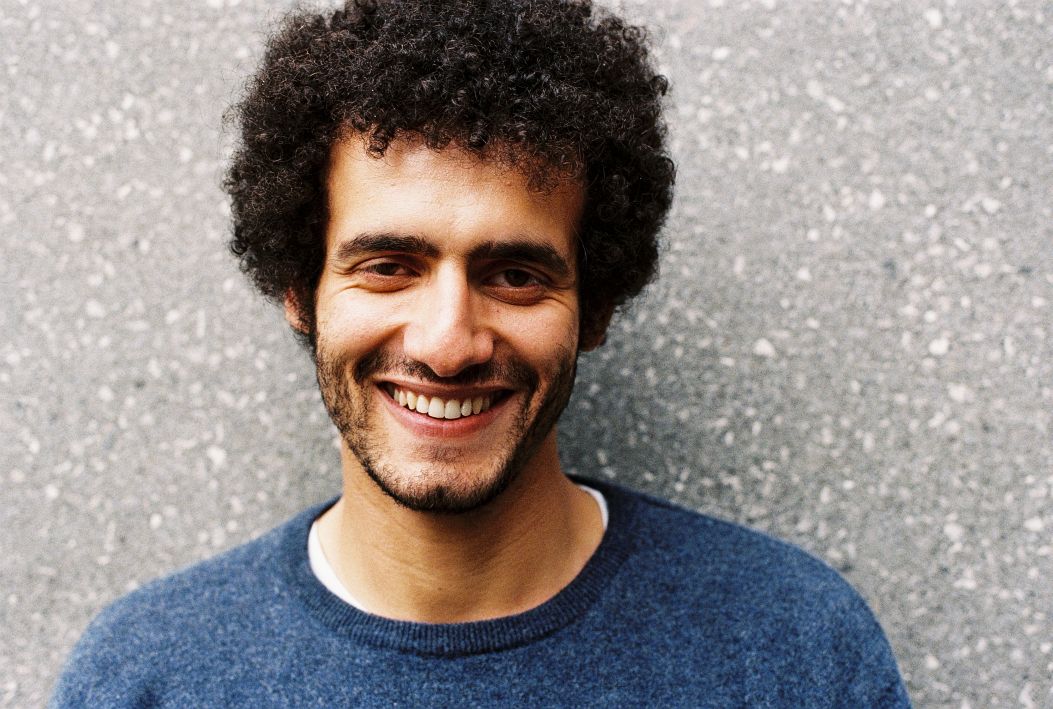
Born in Moselle in 1985, Samir Boumediene is a historian of knowledge and the arts.
A CNRS researcher with a doctorate in modern history, he published his thesis in 2016 under the title The colonization of knowledge. A history of medicinal plants in the New World.
His research project at Villa Medici is devoted to an expression: “Time reveals truth” or “Veritas Filias Temporis”, particularly used in Italian art of the 16th, 17th and 18th centuries. By analyzing the paintings, engravings, drawings, sculptures and tapestries evoking this idea, we aim to understand the importance acquired by the theme of discovery in the cultural, social and political history of the arts. In Italy, this theme is associated with various reflections on the novelty of the times, invention, conflicts between artists and the practice of political secrecy. Through this motto, it is therefore possible to document the Italian contribution to the tensions that have inhabited Europe, between new and old, secrecy and lies, visions of progress and fears of the end.
At the same time, Samir Boumediene is working on projects at the interface between the culinary and visual arts. Following on from his research into fermentation practices and the use of spices, he took advantage of his residency in Rome to write a documentary on soffritto.
Also known as sofregit in Catalan or sofrito in Castilian, soffritto is the basis of many Mediterranean dishes and sauces. Behind its infinite variations, it’s the combination of a fatty substance and a representative of the alium genus (notably onions, garlic and shallots). Although it has no equivalent in the vocabulary of French cuisine, in reality it plays an equally fundamental role. This is also true of many other cuisines in Asia, Africa and America, where, despite the stinging eyes and risk of injury, the preparation of dishes begins with the cutting of a pungent bulb.
By tracing the history of soffritto and its recompositions in the age of fusion cuisine, the aim is to highlight the attention to the guest that characterizes the culinary gesture and gives so many dishes (risotto, caponata, ratatouille, Catalan sauce, mirepoix sauce, etc.) the essence of their flavor.
.
Nidhal Chamekh, visual artist
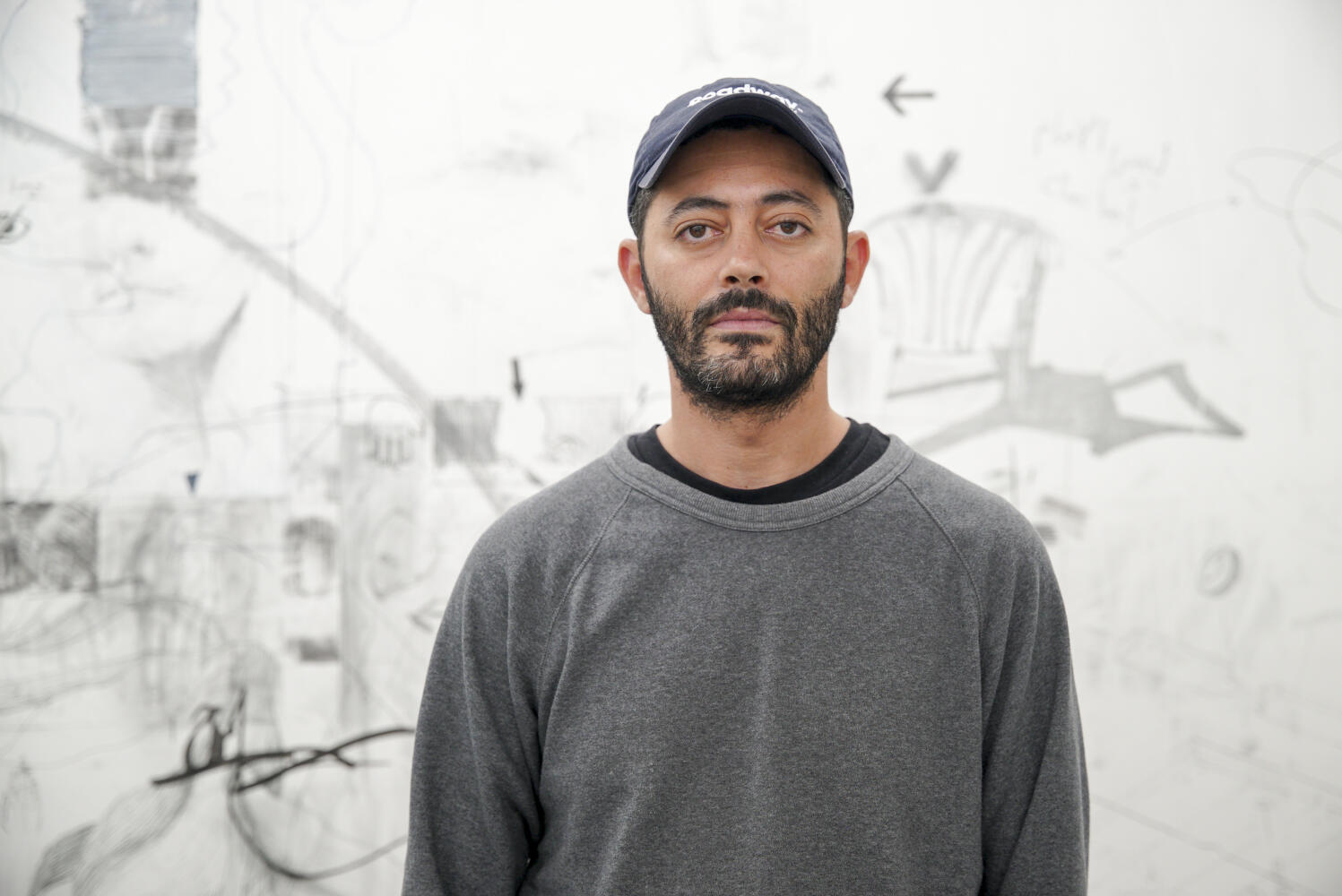
Born in 1985 in Dahmani (Tunisia), Nidhal Chamekh is a visual artist.
Nidhal Chamekh is a graduate of the Institut supérieur des Beaux-Arts in Tunis and the Sorbonne University in Paris. He continues to work and live between the two cities. His work lies at the crossroads of the biographical and the political, the lived and the historical, the event and the archive. It fragments, unravels and dissects the constitution of our contemporary identity.
His work has been exhibited at the Venice Biennale, the Aïchi Triennale, the Orléans Architecture Biennial, the Rencontres de Bamako, the Videobrasil Biennial, the Dakar Biennial, the Dream City Biennial in Tunis and has been shown at the Institut du Monde Arabe in Paris, the Drawing Room in London, the FM Contemporary Art Center in Milan, the MAC Lyon, the Kunsthaus Hamburg, the CCA Lagos and the Hood Museum, among others.
His project at Villa Médicis is entitled “Et si Carthage n’avait pas été détruite? The aim is to take Édouard Glissant’s question literally, and unfold its historical, artistic and symbolic potential. It will take shape through the survival and historical resonance of current relations between Rome and North Africa, and the migratory “crises” and geopolitical tensions they entail.
Her artistic project seeks to introduce Roman archaeological heritage and the marginalized cultural production of the city’s exiles into a montage process where the present and the past are jointly defined.
.
Aude Fourel, filmmaker
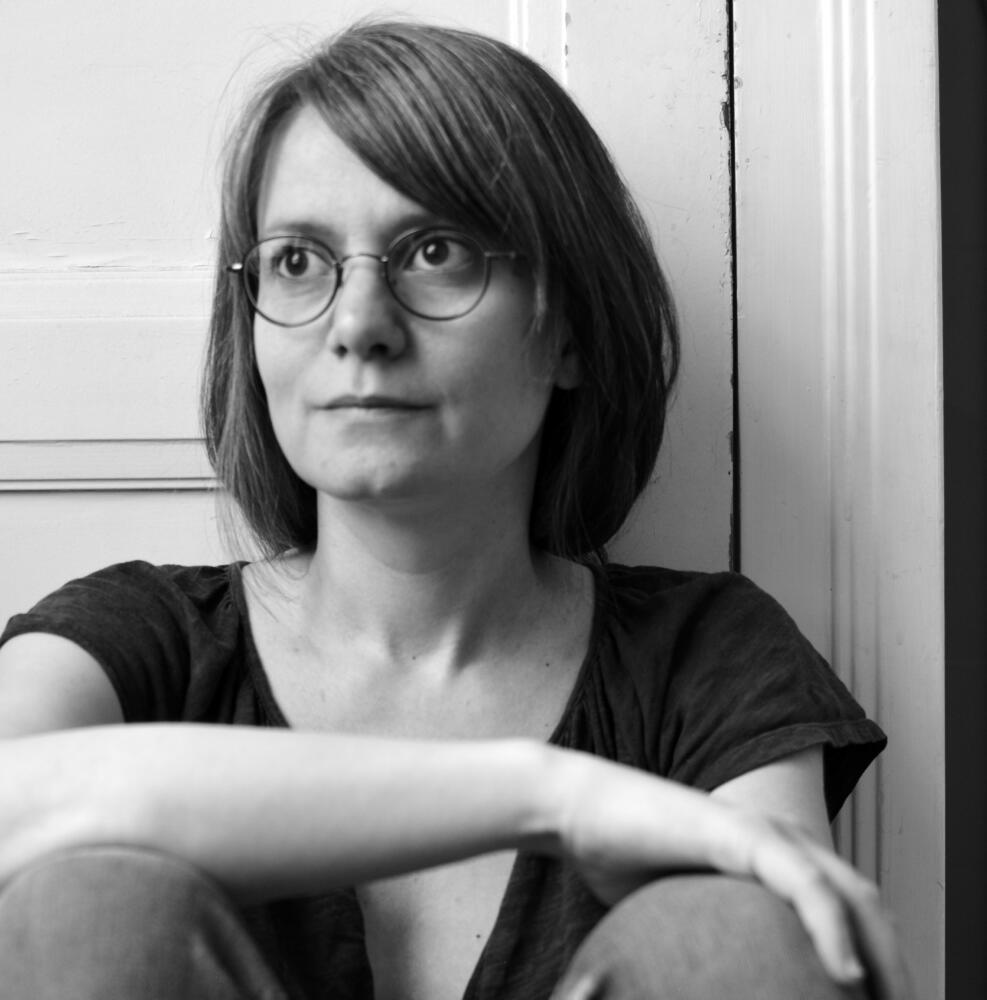
Born in 1978 in Saint-Etienne (France), Aude Fourel is a filmmaker.
Aude Fourel works mainly with super-8 film, which she confronts with digital technology to explore the fragility and instability of the image. She directs, edits and produces her films on the borderline between creative documentary and artist’s film. The main themes of her creations are crossings, walking and filming, narratives and anonymous political commitments. Her filmography includes performance videos, short and medium-length films. Aude Fourel teaches film practices and documentary cinema at Grenoble-Alpes University (France).
Her project at Villa Médicis, entitled Récits d’Elissa, tells the story of daily resistance in Palestine through several characters and a puppet, each the guardian of a story locked away in a piece of archive. Fragments of 16mm film preserved in Rome, abandoned family films, anonymous recordings, kilometers of crossings, these stories have a strong smell of salt – sea or silver – and orange trees. Aude Fourel sets off to Rome, to work in director Monica Maurer’s archives, to search for discarded film reels and walk alongside these characters, in the present tense.
.
Marta Gentilucci, composer
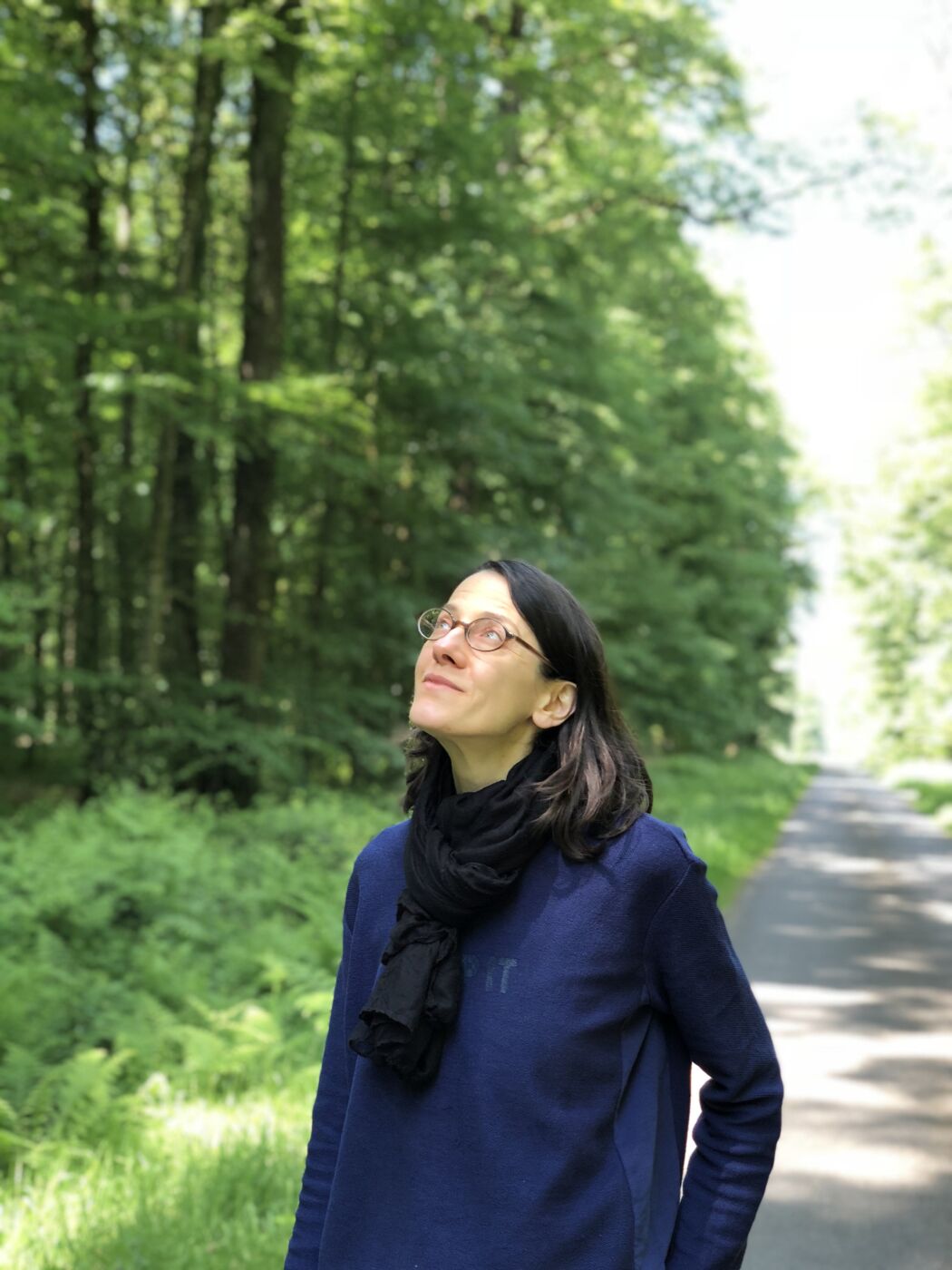
Born in 1973 in Gualdo Tadino (Italy), Marta Gentilucci is a composer.
Marta Gentilucci studied singing in Italy and composition in Germany with Marco Stroppa. She holds a doctorate in composition from Harvard University, USA, with Chaya Czernowin and Hans Tutschku.
She has been in residence at Ircam, the SWR Experimentalstudio and the electronics studio of the Akademie der Künste in Berlin. Her music has been performed internationally, and her electronic music has been selected by the Seoul International Computer Music Festival, the New York City Electroacoustic Music Festival and several editions of the International Computer Music Festival (ICMC). Marta received the ICMC’s “Best Paper Award” in 2018, and the “Best Piece – Regional, Europe” in 2019. In 2018-2019, she was a resident at the Harvard Radcliffe Institute (USA).
Among his most recent activities, Ircam and the Neue Vocalsolisten commissioned two new pieces for voice and electronics, both premiered at the MANIFESTE Festival (Paris, 2020) and presented at the ECLAT Festival (Stuttgart, 2021).
Marta Gentilucci’s project at Villa Medici has led her to create a sound-visual installation with American photographer Susan Meiselas. This collaborative project stems from the desire to create the image of an aging woman’s body, seen through our eyes and ears, in the form of “body maps” – tracing a map of skin, wrinkles, expressions that speak of a life lived, still full of energy and possibilities.
.
Noémie Goddard, interior designer
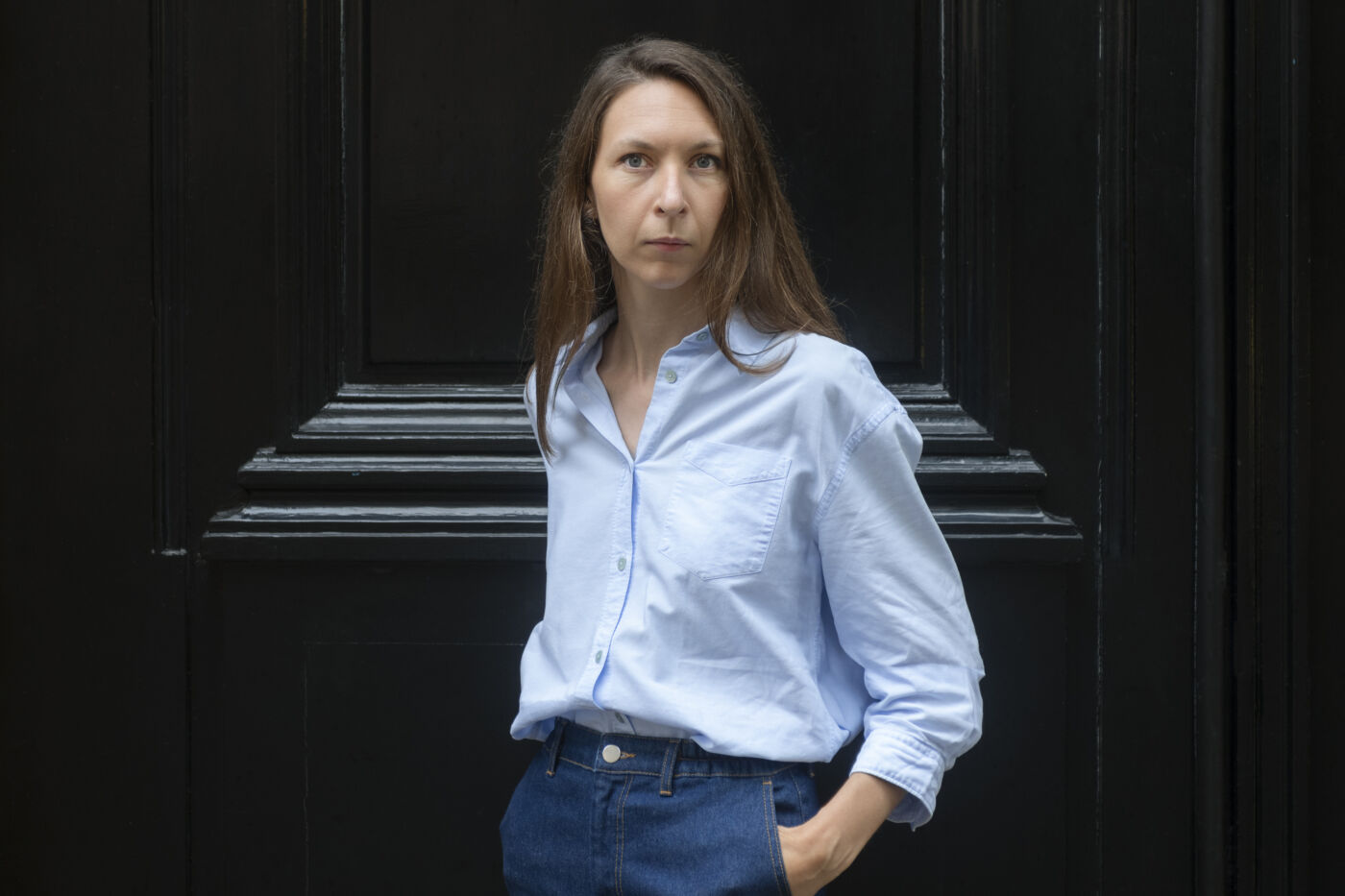
Born in 1985 in Chambéry (France), Noémie Goddard is an interior designer.
Trained in the Applied Arts at the École Boulle and then at the École Normale Supérieure de Cachan, her comprehensive, transdisciplinary architectural practice establishes a dialogue between architecture, interior architecture and furniture design.
Partner – Creative and Communication Director at a Paris-based architecture firm since 2009, she applies her ideas to a wide range of applications, from public facilities to microarchitecture and rehabilitation. In 2015, she co-founded a laboratory dedicated to interior architecture, within which a singular, unifying design methodology is developed, working to reconcile scales and cross disciplines, valorizing arts and crafts and initiating artistic collaborations within the architectural project.
Her project at Villa Medici aims to explore the question ofinteriority andinteriority in a broader sense, leading to the emergence of new ways of living. The project is based in Rome, a paradoxical example of the capacity for reinvention of the built landscape and the disasters associated with over-urbanization, to examine the redesign of interior spaces as a way forward in the face of the over-exploitation of resources implied by new construction. In the form of a survey, bringing together chronicles and applied research in a book, the project offers a historical and critical re-reading of interior design. Could the adaptable, ever-changing interior be the guarantor of our ability to inhabit the world of tomorrow? If interiors and individuals interact in reciprocity, what new articulations can we imagine between built envelopes, interior landscapes and those who inhabit them?
.
Evangelia Kranioti, visual artist and director
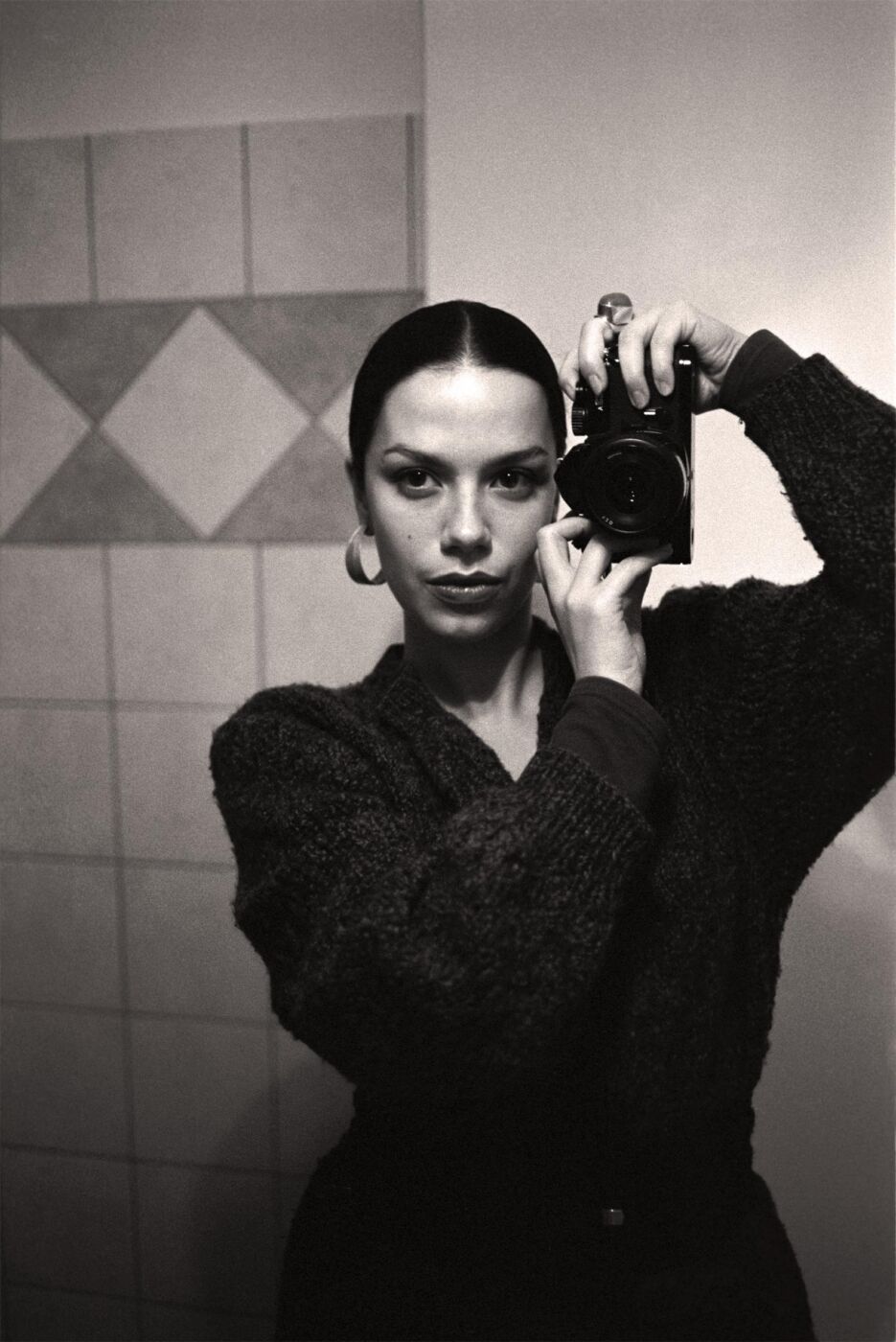
Evangelia Kranioti is a Greek artist and director based in France. She studied law (National University of Athens), visual arts (École nationale supérieure des arts décoratifs de Paris) and cinema (Le Fresnoy – Studio national des arts contemporains, Atelier Scénario – La Fémis).
Winner of numerous grants and awards, Evangelia Kranioti’s artistic work embraces photography, film and video installation. Her first feature-length documentary Exotica, Erotica, Etc. (2015 Berlinale Forum) was selected for several international festivals (including IDFA, BFI London FF, Göteborg IFF, Thessaloniki IDF, Karlovy Vary IFF, Sarajevo IFF) where it received numerous awards, as well as two Iris prizes from the Hellenic Film Academy. His second film Obscuro Barroco (2018 Berlinale Panorama, TEDDY Jury Prize) also won him several awards, including two Iris from the Hellenic Film Academy, as well as several nominations (American Society of Cinematography Documentary award, Cinema Eye Honors, Glashütte Original Documentary Award, Sheffield Doc/Fest Art Award, among others). In 2019, his exhibition Les vivants, les morts et ceux qui sont en mer, presented at the 50th Rencontres de la Photographie in Arles, was acclaimed by the international press and awarded the Prix Madame Figaro.
Her photographic and film project at Villa Medici, entitled Les messagers, explores the issue of migration in the Mediterranean through the figure of Hermes and the prism of myth.
.
Marielle Macé, writer
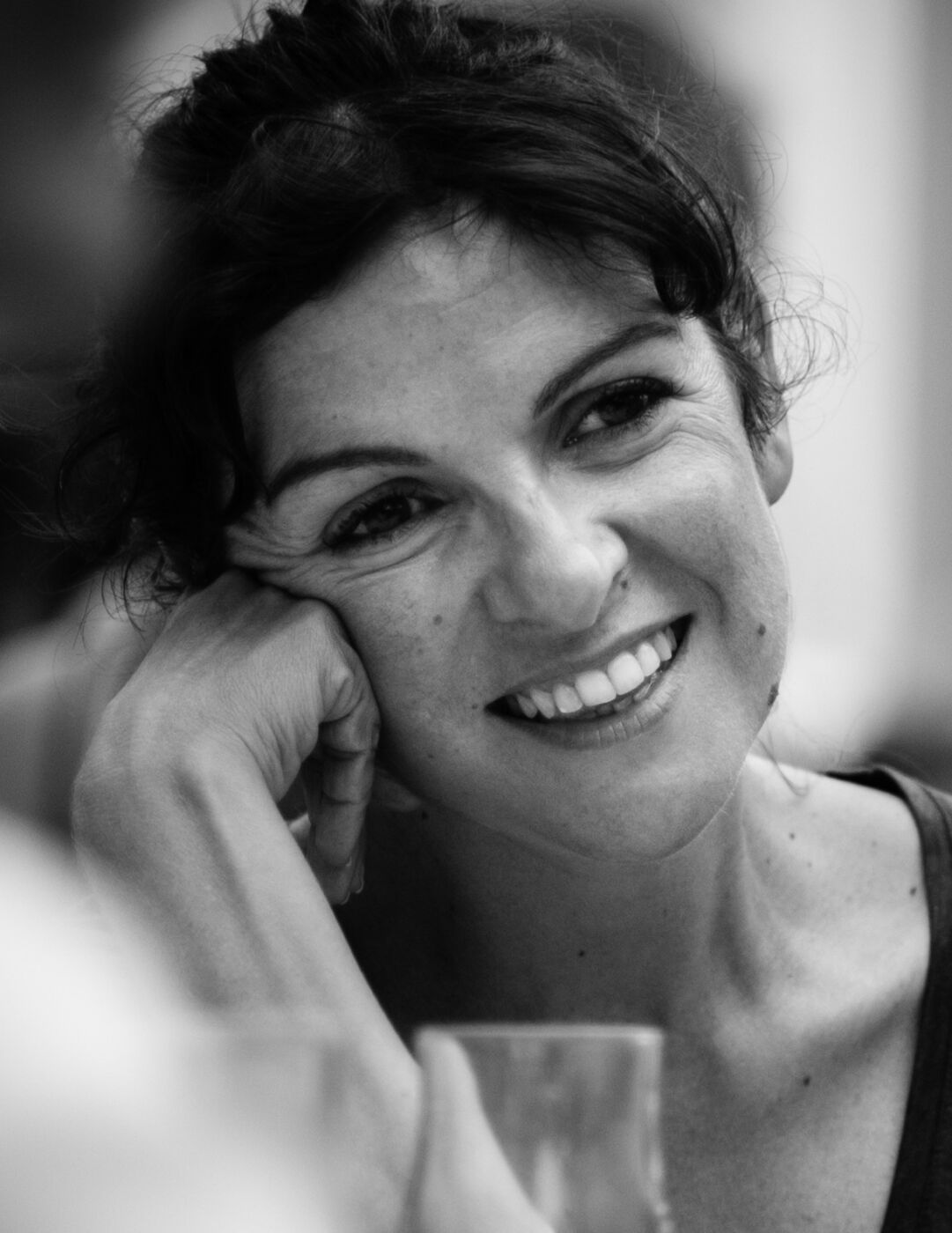
Born in 1973 in Paimboeuf (France), Marielle Macé is a researcher and writer.
Director of research at the CNRS and director of studies at EHESS (Paris), Marielle Macé is also a visiting professor at Chicago, New York (NYU) and Berkeley, and has been an associate author at the Théâtre des Amandiers.
His books (essays, poems) use literature as an ally in thinking about and debating forms of life – social life, communal life, precarious lives, vulnerable landscapes. His publications include Styles. Critique of our way of life (Gallimard, 2016), “Nous” (dir., Critique, 2017), Sidérer, considérer. Migrants in France (Verdier, 2017), “Vivre dans un monde abîmé” (dir., Critique, 2019), Nos cabanes (Verdier, 2019), Parole et pollution (AOC, 2021).
The survey and writing project she is leading at Villa Medici, entitled La Vie poreuse (Porous Life), aims to take the pulse of the river around Rome and the lives that rub up against it: to observe what happens when we defend wetlands, reopen urban rivers, try to desilt soils or unclog memories, and to draw on phenomena of infiltration, connection and percolation in our thinking and writing – for porous life demands a word, which in turn irrigates it and pours into landscapes for good.
.
Benoît Maire, visual artist
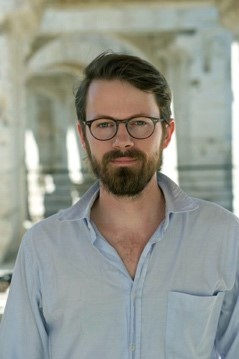
Born in 1978 in Pessac (France), Benoît Maire is a visual artist.
After studying philosophy, Benoît Maire obtained his Diplôme National Supérieur d’Expression Plastique from the Villa Arson in Nice, before completing a research residency at the Pavillon du Palais de Tokyo. Using philosophy, historical texts and artistic references as a starting point, Benoît Maire has developed a polymorphous practice that also takes the form of conferences, publications and curated exhibitions. He regularly collaborates with artists such as Étienne Chambaud, Alex Cecchetti and Falke Pisano.
His research project at Villa Medici is entitled “The hand in painting and printed paper”. His project involves producing a body of work in different media (photography, painting, text, sculpture) that will form an investigation of the transition from the iconic hand of Italian primitivism to the carnal hand of the Renaissance. The hypothesis studied is that the birth of printing at the end of the 15th century contributed to the reformulation of paintings of hands, which lost their power of conceptual designation (deictic) and acquired a more realistic affective weight. Benoît Maire’s work is rooted in this tension, in which the hand searches between two sensitive regimes.
.
Hèctor Parra, composer
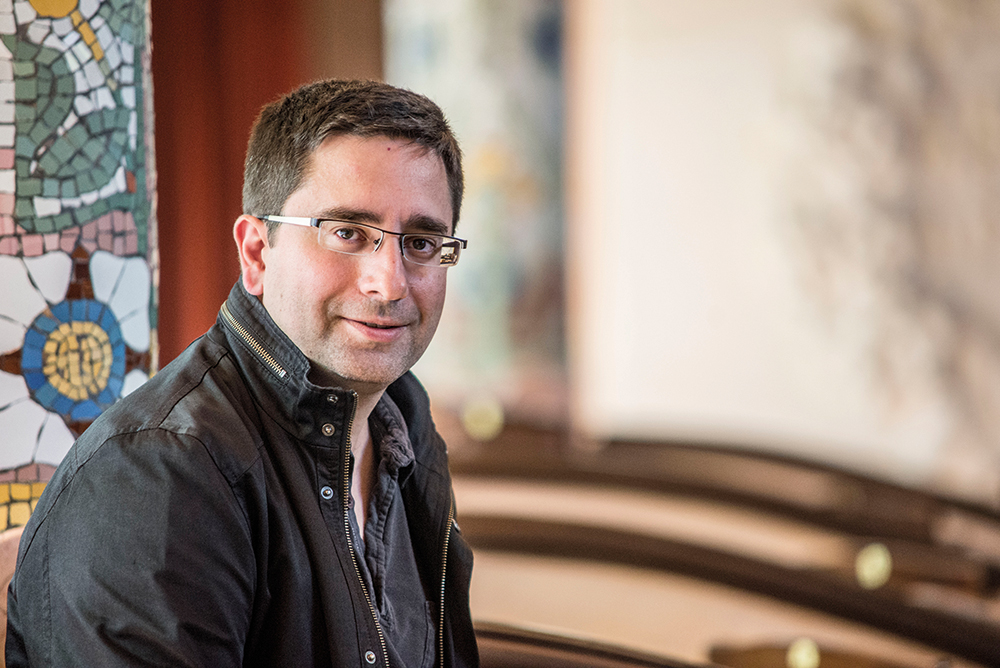
Born in Barcelona (Spain) in 1976, Hèctor Parra is a composer.
Hèctor Parra studied at the Barcelona Conservatory, where he was awarded several prizes with distinction in composition and piano. In 2002-2003, he completed the Composition and Computer Music course at Ircam, then trained at Royaumont, the Centre Acanthes, Takefu in Japan and the Haute École de Musique de Genève with B. Ferneyhough, J. Harvey, M. Jarrell, P. Leroux and P. Manoury.
He receives numerous commissions from institutions such as the Louvre Museum, the Berlin Academy of Arts, the Théâtre des Bouffes du Nord and the Gürzenich Orchester Köln. His music is regularly included in the programs of concert halls such as the Philharmonie de Paris, the Konzerthaus in Vienna, the Philharmonie in Cologne, the Auditori de Barcelona and the Palau de la Música Catalana (composer-in-residence in 2015-2017), the Nouveau Siècle in Lille (composer-in-residence in 2017-2018), the Gasteig in Munich and the Guggenheim Museum in New York. Hèctor Parra devotes himself to lyric composition, and his works are published by Durand. Since 2002, he has lived in Paris, where he taught composition at Ircam from 2013 to 2017.
His project at Villa Medici is dedicated to the composition of the chamber opera Orgia, inspired by Pier Paolo Pasolini’s eponymous theatrical text denouncing his personal drama.Orgia ‘s male protagonist performs the most powerful act imaginable: an accusatory suicide that points to a society full of incomprehension, hypocrisy, cruelty and contempt for any kind of minority. The opera would be written for three solo voices, a modern instrumental ensemble and a baroque instrument (archlute). The residency at Villa Medici will be an opportunity to carry out field research around Pasolini and the city of Rome, where he chose to live, where he became a filmmaker and where he was able to nurture his intellectual development devoted to social criticism.
.
Julie Pellegrin, curator and art critic
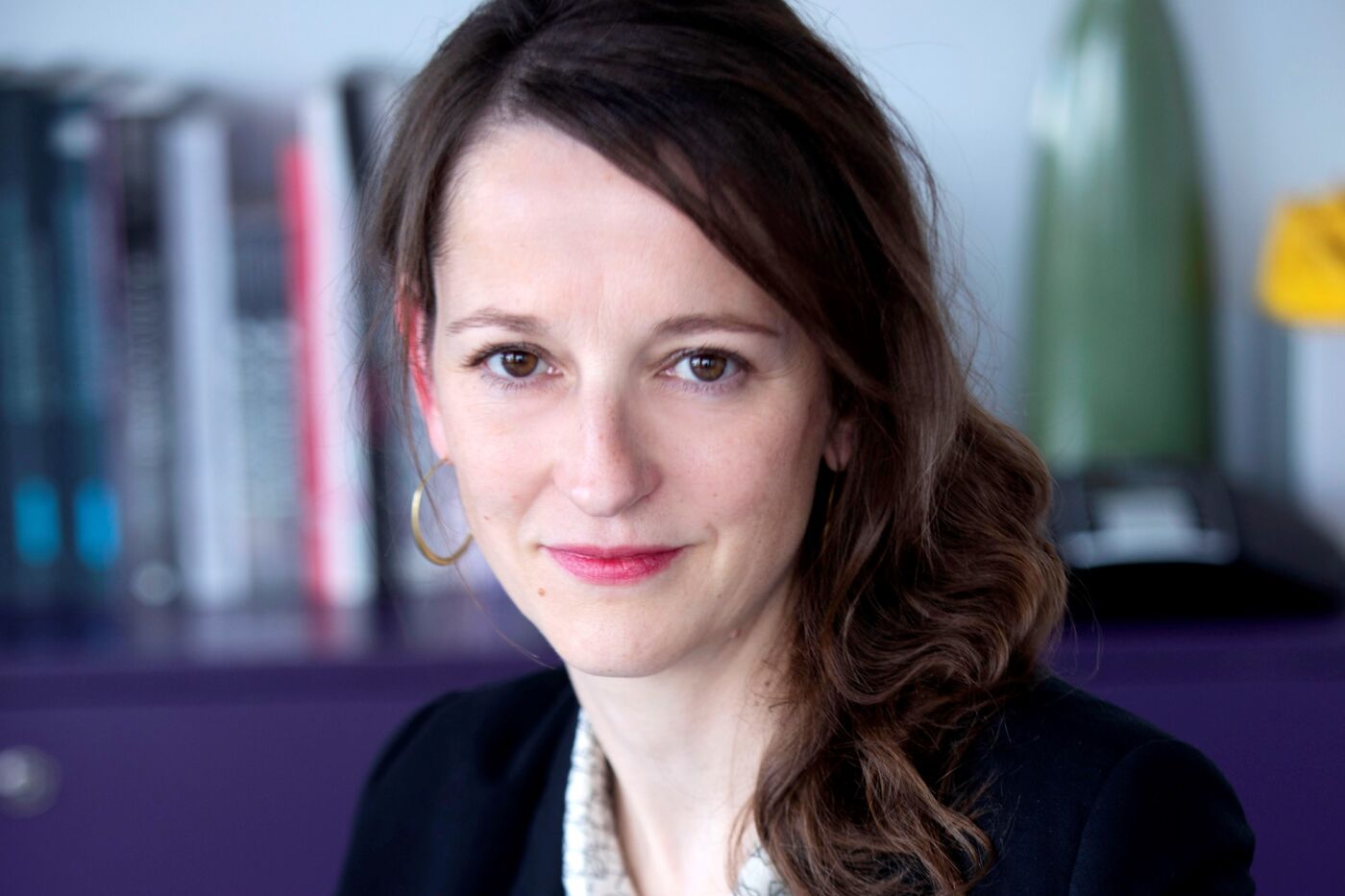
Curator and critic Julie Pellegrin is interested in the broader notion of performativity. She explores how the relationship between the visual arts, choreography and theatricality affects exhibition writing today. Through exhibitions, research projects and publications (Take Care, The Yvonne Rainer Project, Alfred Jarry Archipelago, Chorégraphier l’exposition, Kapwani Kiwanga, Chantal Akerman, Myriam Lefkowitz, Alex Cecchetti, Marie Preston…), or larger programs (the Performance Day festival, Nuit Blanche 2013, Les Formes du délai), she accompanies often ephemeral practices that raise social, political and ethical questions around issues of relationships and attention.
Julie Pellegrin’s research project at Villa Medici is part of a book she is devoting to performance in contemporary art. In it, she examines current performance politics through the prism of references to post-modern dance, recent developments in performance studies and, more specifically, anarchist theories and practices. In order to explore the hypothesis of a relationship between anarchy and performance, she takes as her starting point a historical moment – the Galleria L’Attico project imagined between 1968 and 1976 by Fabio Sargentini with Simone Forti and performers from Judson Dance and Grand Union – in an attempt to trace a lineage between this revolutionary experience and the current performance scene in Italy. Combining archival exploration, interviews and the organization of public meetings, Julie Pellegrin will carry out speculative and collective research at Villa Medici.
.
Mathieu Peyroulet Ghilini, designer
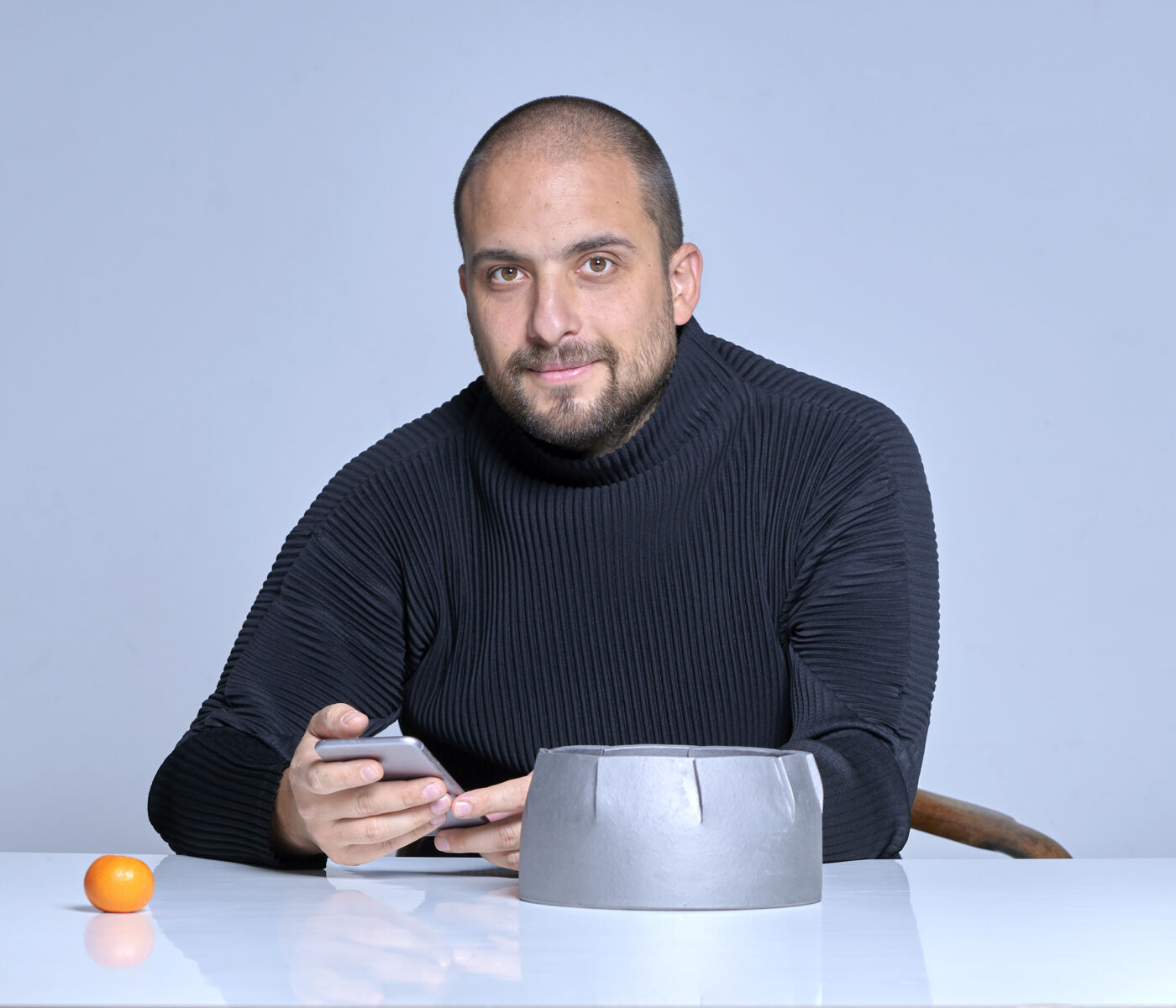
Born in 1983 in Sallanches (France), Mathieu Peyroulet Ghilini is a designer.
Mathieu Peyroulet Ghilini graduated with honors from ENSCI-Les Ateliers for his project Sophistication (2012). Based primarily on the history of design and architecture, this research work focused on various interpretations of the sophistication of a form, and won the Grand Prix du Jury at the Villa Noailles Festival in 2013. Subsequently, Peyroulet Ghilini was designer-in-residence at Sèvres – Manufacture et Musées Nationaux, as well as at the Centre International de Recherche pour le Verre et les Arts Plastiques (CIRVA) in Marseille. Winner of the Villa Kujoyama in Kyoto in 2017 with Laureline Galliot, he was also named “Rising Talent” at the Salon Maison et Objet in 2020.
His project at Villa Medici is entitled “Virtualisation, Fragment, Objet en attente”: it questions the existence of forms and their tangible manifestation, as well as the relationships between them through the prism of technology.
.
Guy Regis Jr., writer and director
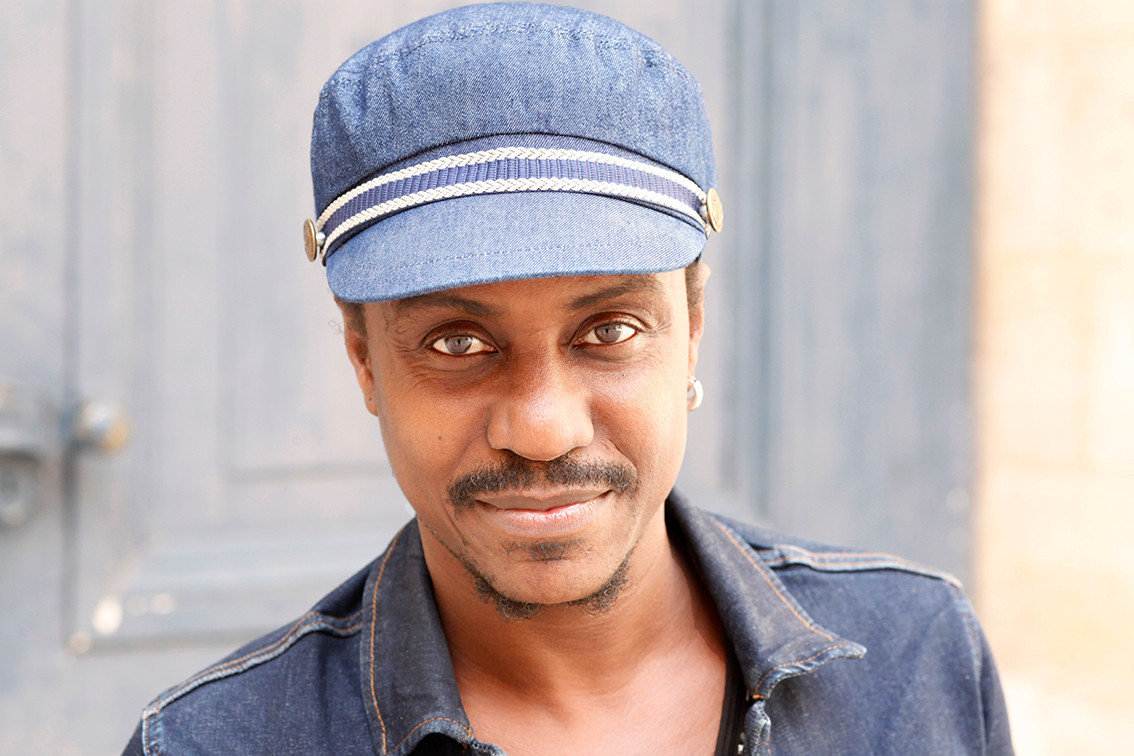
Born in 1974 in Port-au-Prince (Haiti), Guy Régis Jr. is a writer and stage director.
Many of his plays, novels and poetry have been translated into several languages. He recently published Les Cinq Fois où j’ai vu mon père (2020) (Gallimard) and the play Goebbels, juif et footballeur (2020) (Les Solitaires Intempestifs) – where his theatrical works also appear. A translator into Creole, Guy Régis Jr. has also made experimental short films. In 2001, he founded the NOUS Théâtre company, which shook up the codes of contemporary theater, notably by creating Service Violence Série (2005), a veritable political and dramaturgical act that laid the foundations of his work. His polymorphous creations are presented in France (Festival Les Francophonies de Limoges, IN du Festival d’Avignon, several Scènes Nationales), Haiti and abroad (USA, Colombia, Chile, Brazil, Belgium, Italy, Madagascar, etc.). In addition to his creative work, he is actively involved in the development of the performing arts in Haiti. Guy Régis Jr is currently artistic director of the Festival 4 Chemins.
The writing project he is leading at Villa Médicis questions the display of images of hatred in our contemporary society. An attempt to exhaust all our human conflicts through creation and discussion. For never before has an era placed so much before our eyes both the most hidden forms of family violence and the open wars between the giants of this world. Images of the nuclear threat, terrorist attacks, kidnappings, feminicide, rape, police violence and so on are constantly before us, as if our era were the one that wanted to make them more intimate. Guy Régis Jr wants to create a work that would bring together our daily offenses into a whole, and have them debated in an Agora, a Forum, for an entire day. “What last great conflict to satisfy the hatred between humans?” is the transdisciplinary work he wants to devote himself to composing, as a kind of plural dramaturgy, where the public is invited to continue this debate initiated by Einstein and Freud on this “inevitable” need for fracas and war between humans. Penser/Panser les blessures par la solidarité.
.
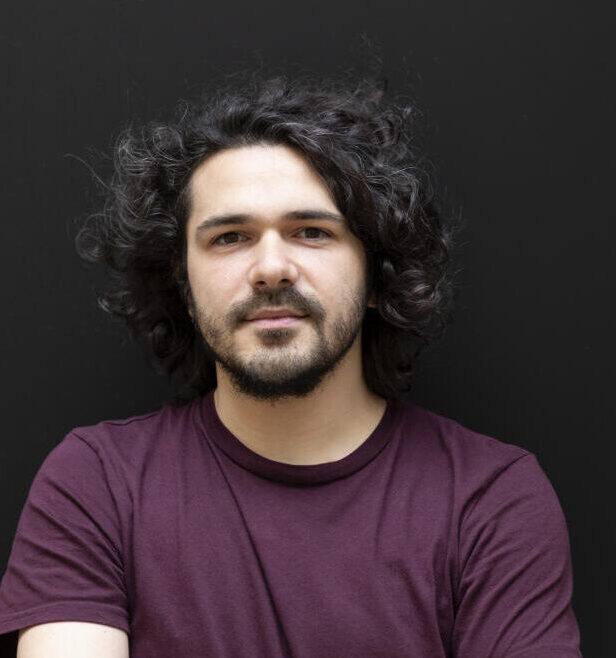
Saverio Verini
Saverio Verini is curator of Nuit Blanche 2021 and of the 2022 fellow’ exhibition.
Curator of contemporary art exhibitions and events, Saverio Verini has collaborated with numerous institutions such as Galleria Nazionale d’Arte Moderna e Contemporanea, Istituto Italiano di Cultura di Parigi, Centro per l’arte contemporanea Luigi Pecci, MACRO, American Academy in Rome, Civitella Ranieri Foundation. He currently coordinates exhibitions at the Memmo Foundation in Rome. A contributor to Artribune magazine, he is also the author of several critical texts.

